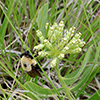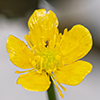Minnesota Plants
Plantae is the kingdom that encompasses all plants. There are about 380,000 known species of plants worldwide. They range in size from a single-celled glaucophyte, found in fresh water and moist terrestrial environments, to Pando, a vast colony of quaking aspen trees in Utah estimated to weigh over 6,000 metric tons and cover 106 acres.
All plants are eukaryotes, having a true nucleus, which stores genetic information, and organelles, which are “little organs” that provide essential functions, all bound by a membrane. Furthermore, all plants either possess or are descending from an ancestor that possessed chloroplasts, an organelle that conducts photosynthesis, converting light energy into chemical energy. Beyond this fundamental definition, we can we can identify only characteristics that pertain to most plants.
Higher Taxonomic Rank & Terminology
In biology, the level of classification (rank) below kingdom and above class is known as division or phylum. On this website, we use the term “division” for plants in accordance with the traditional nomenclature in botany. The International Code of Nomenclature for algae, fungi, and plants (ICN) accepts both “phylum” and “division” as equivalent terms for this rank.

Distribution Maps
Plant occurrence data published by the U.S. Department of Agriculture (PLANTS Database) includes only locations where a specimen has been collected by an herbarium. Rare species location data published by the Minnesota DNR is similarly constrained. Online sources of distribution data for plants in Minnesota rely on these two authorities. This results in published plant ranges that may be representative but are of necessity incomplete.
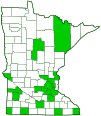
MinnesotaSeasons.com

USDA PLANTS Database
The distribution maps on MinnesotaSeasons.com are derived from multiple sources. Each map is accompanied with links indicating which sources were used in creating the map. Those sources include University of Minnesota Bell Herbarium, USDA PLANTS Database, and the Minnesota DNR Rare Species Guide. However, they also include online databases, such as the Minnesota State checklist of vascular plants (MnTaxa); Biota of North America Program (BONAP); Early Detection & Distribution Mapping System (EDDMapS), and iNaturalist; and print resources, such as Trees and Shrubs of Minnesota and Native Orchids of Minnesota, both by Welby R. Smith; and Vascular Plants of Minnesota by Ownbey and Morley. The maps also include sightings by MinnesotaSeasons.com, and sightings by contributors to MinnesotaSeasons.com that have been verified by the inclusion of a photo sufficient to identify the species.
Recent Additions
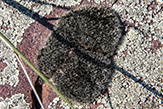
Grimmia dry rock moss (Grimmia laevigata) is a common and widespread tuft-forming moss. It occurs on all continents except Antarctica. It is mostly restricted to the moderate climate areas of the northern and southern hemispheres. It is less common in Minnesota where it reaches the northern extent of its range. In this state it is found in open areas on rock outcrops. It grows under full sun on exposed acidic rock or on thin soil over rock.
Grimmia dry rock moss is extraordinarily drought resistant. Dried herbarium specimens that have been rehydrated after ten years have resumed photosynthetic and metabolic activity. It has adapted to a broad range of environments, yet it shows very little variability throughout its range. Bryologists suggest that a single species cannot be so adaptive, and that Grimmia laevigata must consist of a group of apparently indistinguishable but genetically distinct species.
Grimmia dry rock moss appears as a dense, hoary, dark green to dark brown tuft. The leaves have a long, thin, translucent, hair-like awn at the tip that constitutes almost half the total length of the blade. Spore-producing reproductive structures are rarely produced, and apparently are not produced anywhere in our area.

Juniper haircap moss (Polytrichum juniperinum) is a common and widespread moss with a worldwide distribution, occurring on every continent including Antarctica. In North America it has been recorded in every Canadian province and in every U.S. state except Texas, Louisiana, and Florida. It is common in Minnesota. It is found in a wide variety of habitats, including upland open woodlands, savannas, sand prairies, roadsides, trail sides, rocky ledges, and creek banks. It sometimes colonizes forest openings following a fire or a blowdown. It grows under full sun to light shade, in dry conditions, on acidic, gravelly or sandy soil, or on thin soil over rock. It usually forms loose to moderately dense colonies, and often forms extensive patches.
Juniper haircap moss stems are densely leafy. The leaves are narrow, stiff, and sharply pointed. They resemble juniper leaves. This is the feature that gives the species its common name. When moist, they are flat and they spread straight out in all directions from the stem. When dry, they fold upward against the stem. Male plants develop a flower-like, yellowish to reddish “splash cup”, allowing sperm to be dispersed by rain drops. The fertilized female plant produces a sharply rectangular capsule at the end of a long yellowish to reddish stalk. At maturity, the spores are dispersed by wind.
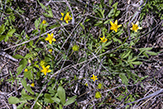
Early buttercup (Ranunculus fascicularis) is one of the first wildflowers to bloom in the spring. It produces bright yellow flowers in April and May. It is found usually in tufts in open woodlands, woodland openings, savannas, prairies, pastures, farmyards, lawns, railroads, and roadsides. It grows under full sun to partial shade on rocky or sandy soil that is poor in nutrients and where there is little competing vegetation.
Early buttercup occurs in the United States and southern Canada east of the Great Plains. In Minnesota it is scattered to common in the lower third of the state, local and uncommon to absent in the middle third, and absent in the northern third.
Early buttercup is a small plant with relatively large flowers. The basal leaves are on long hairy stalks and are divided into 3 to 5 primary leaflets. The leaflets may also be divided into 3 lobes or secondary leaflets. The stem leaves are similar but smaller and less divided. The outer floral leaves (sepals) are flat, not folded or ridged. The flowers are yellow and glossy, and almost always have just five petals. The seed capsules have a long straight beak.
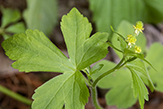
Hooked buttercup (Ranunculus recurvatus var. recurvatus) is a common woodland spring wildflower. It occurs in the eastern half of the United States and southern Canada. It is found in wet to moderately moist or sometimes dry woodlands, in woodland openings and trails, on banks of rivers and streams, and in swamps and fens. It grows in rich organic soil under light to medium shade.
Most members of the genus Ranunculus, including hooked buttercup, are poisonous. They cause blistering in the mouth and in the gastrointestinal tract when eaten. Handling the plants causes contact dermatitis.
Hooked buttercup is an erect plant. The basal leaves are large and are divided into three lobes. A few solitary flowers appear at the end of the stem between May to June. The flowers have small, pale yellow petals and are not showy. The fruits have a slender extension (beak) at the end. The beak is strongly curved, appearing hooked. This is the feature that gives the plant its common name.
Hooked buttercup is easily identified. The large lobed leaves and small pale yellow petals help with the identification. The hooked beak of the achenes confirm it.
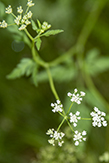
Japanese hedge parsley (Torilis japonica) is native to Europe, Asia, and the Indian subcontinent. It was introduced in North America in 1917 and is now naturalized. In the United States it is widespread but sporadic in the east and in the Pacific Northwest. It is found in natural areas, including open woodlands, woodland edges, savannas, and thickets; and in disturbed sites, including pastures, roadsides, and railroads. It grows under partial sun to full shade, sometimes under full sun, in dry to moderately moist soil. It is considered an aggressively invasive weed here, where it can out-compete native species. Wisconsin lists it as Prohibited/Restricted Invasive - Eradicate! (their emphasis). In Minnesota it is not listed but there is a program to eradicate it in Dakota County parks.
Japanese hedge parsley can be 8″ to 48″ tall, but in Minnesota flowering plants are usually no more than 24″ in height. In Minnesota it is a biennial, taking two years to complete its life cycle. In more southerly regions it is an annual. The stems are erect, grooved, and hairy, The leaves are fern-like, divided into three or five sections then divided again. They are covered with hairs both above and below. Tiny white flowers appear in a loose umbrella-like cluster at the end of the stem and the branches. The fruit is a small brown seed covered with hooked hairs that will stubbornly cling to any fabric.
Other Recent Additions
This list includes only plants that have been recorded outside of cultivation in Minnesota, but not all of the plants found in Minnesota.
| A | |||||
|---|---|---|---|---|---|
| Profile | Photo | Video | |||
agrimony (Agrimonia spp.) |
|||||
alder-leaved buckthorn (Rhamnus alnifolia) |
|||||
alkali buttercup (Ranunculus cymbalaria) |
|||||
alkali cordgrass (Sporobolus hookerianus) |
|||||
alkali plantain (Plantago eriopoda) |
|||||
Allegheny vine (Adlumia fungosa) |
|||||
alpine bistort (Polygonum viviparum) |
|||||
alpine enchanter’s-nightshade (Circaea alpina ssp. alpina) |
|||||
alpine milkvetch (Astragalus alpinus var. alpinus) |
|||||
alpine woodsia (Woodsia alpina) |
|||||
American beachgrass (Ammophila breviligulata) |
|||||
American bird’s-foot trefoil (Acmispon americanus var. americanus) |
|||||
American burnweed (Erechtites hieraciifolius var. hieraciifolius) |
|||||
American bur-reed (Sparganium americanum) |
|||||
American chestnut (Castanea dentata) |
|||||
American dragonhead (Dracocephalum parviflorum) |
|||||
American false pennyroyal (Hedeoma pulegioides) |
|||||
American funaria moss (Funaria americana) |
|||||
American highbush cranberry (Viburnum opulus var. americanum) |
|||||
American lotus (Nelumbo lutea) |
|||||
American mannagrass (Glyceria grandis) |
|||||
American marsh pennywort (Hydrocotyle americana) |
|||||
American mountain ash (Sorbus americana) |
|||||
American purple vetch (Vicia americana ssp. minor) |
|||||
American shoreweed (Littorella uniflora) |
|||||
American sloughgrass (Beckmannia syzigachne) |
|||||
American trumpet vine (Campsis radicans) |
|||||
American water plantain (Alisma subcordatum) |
|||||
American water-willow (Justicia americana) |
|||||
American witchhazel (Hamamelis virginiana) |
|||||
American woodland strawberry (Fragaria vesca ssp. americana) |
|||||
Andrews’ lady’s slipper (Cypripedium x andrewsii) |
|||||
annual bluegrass (Poa annua) |
|||||
annual bursage (Ambrosia acanthicarpa) |
|||||
Appalachian barren strawberry (Waldsteinia fragarioides) |
|||||
Appalachian clubmoss (Huperzia appalachiana) |
|||||
arctic brome (Bromus kalmii) |
|||||
arctic raspberry (Rubus arcticus ssp. acaulis) |
|||||
arctic sweet coltsfoot (Petasites frigidus) |
|||||
aromatic aster (Symphyotrichum oblongifolium) |
|||||
arrow-leaved aster (Symphyotrichum urophyllum) |
|||||
arrow-leaved sweet coltsfoot (Petasites frigidus var. sagittatus) |
|||||
arrowfeather threeawn (Aristida purpurascens var. purpurascens) |
|||||
arrowhead rattlebox (Crotalaria sagittalis) |
|||||
arrowleaf tearthumb (Persicaria sagittata) |
|||||
Atlantic ninebark (Physocarpus opulifolius var. intermedius) |
|||||
auricled twayblade (Neottia auriculata) |
|||||
Austrian pine (Pinus nigra) |
|||||
autumn spotted coralroot (Corallorhiza odontorhiza var. odontorhiza) |
|||||
autumn fimbristylis (Fimbristylis autumnalis) |
|||||
autumn olive (Elaeagnus umbellata) |
|||||
autumn willow (Salix serissima) |
|||||
|
|||||
|
|||||
|
|||||
|
|||||
|
|||||
|
|||||
|
|||||
|
|||||
|
|||||
|
|||||
|
|||||
|
|||||
|
|||||
|
|||||
|
|||||
|
|||||
|
|||||
|
|||||
|
|||||
|
|||||
|
|||||
|
|||||
|
|||||
|
|||||
|
|||||
|
|||||
|
|||||
|
|||||
|
|||||
|
|||||
|
|||||
|
|||||
|
|||||
|
|||||
|
|||||
|
|||||
|
|||||
|
|||||
|
| B | |||||
|---|---|---|---|---|---|
| Profile | Photo | Video | |||
baby's breath (Gypsophila paniculata) |
|||||
bachelor’s button (Centaurea cyanus) |
|||||
Back’s sedge (Carex backii) |
|||||
bald spikerush (Eleocharis erythropoda) |
|||||
Baldwin’s ironweed (Vernonia baldwinii ssp. interior) |
|||||
ball cactus (Escobaria vivipara var. vivipara) |
|||||
Baltic rush (Juncus balticus var. littoralis) |
|||||
baneberry (Actaea spp.) |
|||||
bare-stemmed tick trefoil (Desmodium nudiflorum) |
|||||
barnyard grass (Echinochloa crus-galli) |
|||||
bay-leaved willow (Salix pentandra) |
|||||
beach pea (Lathyrus japonicus var. maritimus) |
|||||
beaked skeletonweed (Shinnersoseris rostrata) |
|||||
beaked spike-rush (Eleocharis rostellata) |
|||||
bearded shorthusk (Brachyelytrum erectum) |
|||||
bearded wheatgrass (Elymus trachycaulus ssp. subsecundus) |
|||||
Bebb’s sedge (Carex bebbii) |
|||||
beefsteak plant (Perilla frutescens) |
|||||
Bebb’s willow (Salix bebbiana) |
|||||
Bicknell’s sedge (Carex bicknellii) |
|||||
Bigelow’s bottlebrush grass (Elymus hystrix var. bigeloviana) |
|||||
bigfruit evening primrose (Oenothera laciniata) |
|||||
bigfruit hawthorn (Crataegus macrosperma) |
|||||
bitter fleabane (Erigeron acris var. kamtschaticus) |
|||||
black chokeberry (Aronia melanocarpa) |
|||||
black crowberry (Empetrum nigrum) |
|||||
black huckleberry (Gaylussacia baccata) |
|||||
black mustard (Brassica nigra) |
|||||
black oak (Quercus velutina) |
|||||
black willow (Salix nigra) |
|||||
black-seeded rice grass (Patis racemosa) |
|||||
blackfoot quillwort (Isoetes melanopoda) |
|||||
bladderwort (Utricularia spp.) |
|||||
Blanchard’s dewberry (Rubus satis) |
|||||
blite goosefoot (Chenopodium capitatum) |
|||||
blood milkwort (Polygala sanguinea) |
|||||
blue beech (Carpinus caroliniana ssp. virginiana) |
|||||
blue flag iris (Iris sp.) |
|||||
blue mudplantain (Heteranthera limosa) |
|||||
blue wild indigo (Baptisia australis) |
|||||
blunt-fruited sweet cicely (Osmorhiza depauperata) |
|||||
blunt-leaved orchid (Platanthera obtusata) |
|||||
blunt-lobed grapefern (Botrychium oneidense) |
|||||
blunt-lobed woodsia (Woodsia obtusa ssp. obtusa) |
|||||
bluntleaf bedstraw (Galium obtusum ssp. obtusum) |
|||||
bluntleaf yellowcress (Rorippa curvipes) |
|||||
blunt sedge (Carex obtusata) |
|||||
blunt spikerush (Eleocharis obtusa) |
|||||
bog adder’s-mouth (Malaxis paludosa) |
|||||
bog bilberry (Vaccinium uliginosum) |
|||||
bog bluegrass (Poa paludigena) |
|||||
bog haircap moss (Polytrichum strictum) |
|||||
bog Labrador tea (Rhododendron groenlandicum) |
|||||
bog laurel (Kalmia polifolia) |
|||||
bog rosemary (Andromeda glaucophylla) |
|||||
bog willowherb (Epilobium leptophyllum) |
|||||
border forsythia (Forsythia × intermedia) |
|||||
branching centaury (Centaurium pulchellum) |
|||||
Braun’s hollyfern (Polystichum braunii) |
|||||
bright green spike-rush (Eleocharis flavescens var. olivacea) |
|||||
bristle-berry (Rubus regionalis) |
|||||
bristle-berry (Rubus stipulatus) |
|||||
bristle-berry (Rubus uniformis) |
|||||
bristly blackberry (Rubus dissensus) |
|||||
bristly buttercup (Ranunculus hispidus var. caricetorum) |
|||||
bristly dewberry (Rubus hispidus) |
|||||
bristly foxtail (Setaria verticillata) |
|||||
bristly haircap moss (Polytrichum piliferum) |
|||||
bristly locust (Robinia hispida var. hispida) |
|||||
bristly sarsaparilla (Aralia hispida) |
|||||
brittlestem hempnettle (Galeopsis tetrahit) |
|||||
Britton’s scalewort (Frullania brittoniae) |
|||||
broad-leaved dock (Rumex obtusifolius) |
|||||
broad-leaved helleborine (Epipactis helleborine ssp. helleborine) |
|||||
broad-leaved panicled aster (Symphyotrichum lanceolatum var. latifolium) |
|||||
broadleaf water milfoil (Myriophyllum heterophyllum) |
|||||
brome-like sedge (Carex bromoides) |
|||||
brown mustard (Brassica juncea) |
|||||
brown peatmoss (Sphagnum fuscum) |
|||||
Bruner’s spotted Joe pye weed (Eutrochium maculatum var. bruneri) |
|||||
buckbean (Menyanthes trifoliata) |
|||||
buffalo grass (Buchloë dactyloides) |
|||||
bulblet fern (Cystopteris bulbifera) |
|||||
bur oak (Quercus macrocarpa var. depressa) |
|||||
bushy cinquefoil (Potentilla supina ssp. paradoxa) |
|||||
buttonbush dodder (Cuscuta cephalanthi) |
|||||
Buxbaum’s sedge (Carex buxbaumii) |
|||||
|
|||||
|
|||||
|
|||||
|
|||||
|
|||||
|
|||||
|
|||||
|
|||||
|
|||||
|
|||||
|
|||||
|
|||||
|
|||||
|
|||||
|
|||||
|
|||||
|
|||||
|
|||||
|
|||||
|
|||||
|
|||||
|
|||||
|
|||||
|
|||||
|
|||||
|
|||||
|
|||||
|
|||||
|
|||||
|
|||||
|
|||||
|
|||||
|
|||||
|
|||||
|
|||||
|
|||||
|
|||||
|
|||||
|
|||||
|
|||||
|
|||||
|
|||||
|
|||||
|
|||||
|
|||||
|
|||||
|
|||||
|
|||||
|
|||||
|
|||||
|
|||||
|
|||||
|
|||||
|
| C | |||||
|---|---|---|---|---|---|
| Profile | Photo | Video | |||
calico aster (Symphyotrichum lateriflorum var. lateriflorum) |
|||||
calla lily (Zantedeschia aethiopica) |
|||||
Canada bluegrass (Poa compressa) |
|||||
Canada frostweed (Crocanthemum canadense) |
|||||
Canada yew (Taxus canadensis) |
|||||
Canadian black snakeroot (Sanicula canadensis var. canadensis) |
|||||
Canadian gooseberry (Ribes oxyacanthoides ssp. oxyacanthoides) |
|||||
caraway (Carum carvi) |
|||||
Carey’s smartweed (Persicaria careyi) |
|||||
Carey’s sedge (Carex careyana) |
|||||
Carolina foxtail (Alopecurus carolinianus) |
|||||
Carolina spring beauty (Claytonia caroliniana var. caroliniana) |
|||||
Carolina whitlowgrass (Draba reptans) |
|||||
cattail (Typha sp.) |
|||||
cattail sedge (Carex typhina) |
|||||
cedar moss (Sciuro-hypnum oedipodium) |
|||||
central peatmoss (Sphagnum centrale) |
|||||
Chamisso’s cottongrass (Eriophorum chamissonis) |
|||||
charity (Polemonium caeruleum) |
|||||
cheatgrass (Bromus tectorum) |
|||||
chestnut sedge (Carex castanea) |
|||||
chickpea milkvetch (Astragalus cicer) |
|||||
Chilean sweet cicely (Osmorhiza berteroi) |
|||||
Chinese catalpa (Catalpa ovata) |
|||||
chinkapin oak (Quercus muehlenbergii) |
|||||
Chisos red oak (Quercus gravesii) |
|||||
chrome peatmoss (Sphagnum squarrosum) |
|||||
clammy hedge-hyssop (Gratiola neglecta) |
|||||
clasping-leaved twisted-stalk (Streptopus amplexifolius) |
|||||
clasping-leaved Venus’ looking-glass (Triodanis perfoliata ssp. perfoliata) |
|||||
clasping pepper grass (Lepidium perfoliatum) |
|||||
cliff goldenrod (Solidago sciaphila) |
|||||
cliff fern (Woodsia spp.) |
|||||
Clinton’s bulrush (Trichophorum clintonii) |
|||||
cloudberry (Rubus chamaemorus) |
|||||
clustered broomrape (Orobanche fasciculata) |
|||||
clustered poppy mallow (Callirhoe triangulata) |
|||||
coastal sedge (Carex exilis) |
|||||
cobaea beardtongue (Penstemon cobaea) |
|||||
Columbia watermeal (Wolffia columbiana) |
|||||
common barberry (Berberis vulgaris) |
|||||
common blue wood aster (Symphyotrichum cordifolium) |
|||||
common bur-reed (Sparganium eurycarpum) |
|||||
common butterwort (Pinguicula vulgaris ssp. vulgaris) |
|||||
common dayflower (Commelina communis) |
|||||
common dodder (Cuscuta gronovii) |
|||||
common duckweed (Lemna minor) |
|||||
common false Solomon’s seal (Maianthemum racemosum var. racemosum) |
|||||
common flax (Linum usitatissimum) |
|||||
common haircap moss (Polytrichum commune) |
|||||
common hop-tree (Ptelea trifoliata ssp. trifoliata var. trifoliata) |
|||||
common lilac (Syringa vulgaris) |
|||||
common moonwort (Botrychium lunaria) |
|||||
common morning-glory (Ipomoea purpurea) |
|||||
common ninebark (Physocarpus opulifolius) |
|||||
common ninebark (Physocarpus opulifolius var. opulifolius) |
|||||
common panicled aster (Symphyotrichum lanceolatum ssp. lanceolatum) |
|||||
common panicled aster (Symphyotrichum lanceolatum var. lanceolatum) |
|||||
common rivergrass (Scolochloa festucacea) |
|||||
common rush (Juncus effusus) |
|||||
common spikerush (Eleocharis palustris) |
|||||
common star-of-Bethlehem (Ornithogalum umbellatum) |
|||||
common three-square (Schoenoplectus pungens) |
|||||
common threeseed mercury (Acalypha rhomboidea) |
|||||
common vetch (Vicia sativa) |
|||||
common vetch (Vicia sativa ssp. nigra) |
|||||
common vetch (Vicia sativa ssp. sativa) |
|||||
common viper’s bugloss (Echium vulgare) |
|||||
common wood fern (Dryopteris intermedia) |
|||||
common woodrush (Luzula multiflora) |
|||||
confederate violet (Viola sororia f. priceana) |
|||||
coon’s tail (Ceratophyllum demersum) |
|||||
coralberry (Symphoricarpos orbiculatus) |
|||||
corn (Zea mays) |
|||||
corn speedwell (Veronica arvensis) |
|||||
cow vetch (Vicia cracca) |
|||||
crabgrass (Digitaria spp.) |
|||||
Crawe’s sedge (Carex crawei) |
|||||
cream wild indigo (Baptisia bracteata var. leucophaea) |
|||||
creeping bentgrass (Agrostis stolonifera) |
|||||
creeping buttercup (Ranunculus repens) |
|||||
creeping snowberry (Gaultheria hispidula) |
|||||
crested sedge (Carex cristatella) |
|||||
crested wheatgrass (Agropyron cristatum) |
|||||
crested wood fern (Dryopteris cristata) |
|||||
crisped pincushion (Ulota crispa) |
|||||
crookedstem aster (Symphyotrichum prenanthoides) |
|||||
cross-leaved milkwort (Polygala cruciata) |
|||||
crowned beggarticks (Bidens trichosperma) |
|||||
cuckoo flower (Cardamine pratensis) |
|||||
curly pondweed (Potamogeton crispus) |
|||||
cursed crowfoot (Ranunculus sceleratus) |
|||||
cursed crowfoot (Ranunculus sceleratus var. multifidus) |
|||||
cursed crowfoot (Ranunculus sceleratus var. sceleratus) |
|||||
cutleaf waterparsnip (Berula erecta) |
|||||
cut-leaf ironplant (Xanthisma spinulosum var. spinulosum) |
|||||
cut-leaved anemone (Anemone multifida var. multifida) |
|||||
cut-leaved evening primrose (Oenothera laciniata) |
|||||
|
|||||
|
|||||
|
|||||
|
|||||
|
|||||
|
|||||
|
|||||
|
|||||
|
|||||
|
|||||
|
|||||
|
|||||
|
|||||
|
|||||
|
|||||
|
|||||
|
|||||
|
|||||
|
|||||
|
|||||
|
|||||
|
|||||
|
|||||
|
|||||
|
|||||
|
|||||
|
|||||
|
|||||
|
|||||
|
|||||
|
|||||
|
|||||
|
|||||
|
|||||
|
|||||
|
|||||
|
|||||
|
|||||
|
|||||
|
|||||
|
|||||
|
|||||
|
|||||
|
|||||
|
|||||
|
|||||
|
|||||
|
|||||
|
|||||
|
|||||
|
|||||
|
|||||
|
|||||
|
|||||
|
|||||
|
|||||
|
|||||
|
|||||
|
|||||
|
|||||
|
|||||
|
|||||
|
|||||
|
|||||
|
|||||
|
|||||
|
|||||
|
|||||
|
|||||
|
|||||
|
|||||
|
|||||
|
|||||
|
|||||
|
|||||
|
|||||
|
|||||
|
|||||
|
|||||
|
|||||
|
| D | |||||
|---|---|---|---|---|---|
| Profile | Photo | Video | |||
David’s spurge (Euphorbia davidii) |
|||||
Davis’ sedge (Carex davisii) |
|||||
decurrent false aster (Boltonia decurrens) |
|||||
deer sedge (Carex hallii) |
|||||
delicate fern moss (Thuidium delicatulum) |
|||||
desert goosefoot (Chenopodium pratericola) |
|||||
devil’s beggarticks (Bidens frondosa) |
|||||
devil’s tongue (Opuntia humifusa var. humifusa) |
|||||
Dewey’s sedge (Carex deweyana) |
|||||
diamondleaf willow (Salix planifolia ssp. planifolia) |
|||||
dill (Anethum graveolens) |
|||||
disk water-hyssop (Bacopa rotundifolia) |
|||||
ditch stonecrop (Penthorum sedoides) |
|||||
dodder (Cuscuta spp.) |
|||||
dog-fennel (Anthemis cotula) |
|||||
dotted hawthorn (Crataegus punctata) |
|||||
dotted smartweed (Persicaria punctata) |
|||||
Douglas hawthorn (Crataegus douglasii) |
|||||
Douglas-fir (Pseudotsuga menziesii) |
|||||
downy arrowwood (Viburnum rafinesqueanum var. rafinesqueanum) |
|||||
downy painted cup (Castilleja sessiliflora) |
|||||
downy rattlesnake plantain (Goodyera pubescens) |
|||||
downy willow herb (Epilobium strictum) |
|||||
dragon’s mouth (Arethusa bulbosa) |
|||||
drooping woodland sedge (Carex arctata) |
|||||
drooping woodreed (Cinna latifolia) |
|||||
Drummond’s aster (Symphyotrichum drummondii var. drummondii) |
|||||
Drummond’s rockcress (Arabis drummondii) |
|||||
dry sedge (Carex xerantica) |
|||||
dry-spike sedge (Carex siccata) |
|||||
Dudley’s rush (Juncus dudleyi) |
|||||
dwarf bilberry (Vaccinium caespitosum) |
|||||
dwarf cinquefoil (Potentilla canadensis) |
|||||
dwarf scouring rush (Equisetum scirpoides) |
|||||
dyc (Flava composita var. damnatus) |
| E | |||||
|---|---|---|---|---|---|
| Profile | Photo | Video | |||
early coralroot (Corallorhiza trifida) |
|||||
early goldenrod (Solidago juncea) |
|||||
early horse gentian (Triosteum aurantiacum var. aurantiacum) |
|||||
early saxifrage (Micranthes virginiensis) |
|||||
eastern dwarf mistletoe (Arceuthobium pusillum) |
|||||
eastern leatherwood (Dirca palustris) |
|||||
eastern marsh fern (Thelypteris palustris var. pubescens) |
|||||
eastern redbud (Cercis canadensis var. canadensis) |
|||||
eastern spotted coralroot (Corallorhiza maculata var. maculata) |
|||||
eastern star sedge (Carex radiata) |
|||||
eastern woodland sedge (Carex blanda) |
|||||
ebony spleenwort (Asplenium platyneuron) |
|||||
eggleaf rosette grass (Dichanthelium ovale) |
|||||
eggleaf rosette grass (Dichanthelium ovale ssp. praecocius) |
|||||
eggleaf rosette grass (Dichanthelium ovale ssp. pseudopubescens) |
|||||
eggleaf rosette grass (Dichanthelium ovale ssp. villosissimum) |
|||||
elegant groundsel (Packera indecora) |
|||||
Emory’s sedge (Carex emoryi) |
|||||
Engelmann’s spikerush (Eleocharis engelmannii) |
|||||
English sundew (Drosera anglica) |
|||||
European black alder (Alnus glutinosa) |
|||||
European black currant (Ribes nigrum) |
|||||
European crab apple (Malus sylvestris) |
|||||
European mountain ash (Sorbus aucuparia) |
|||||
European plum (Prunus domestica) |
|||||
European stickseed (Lappula squarrosa) |
|||||
eyebright (Euphrasia officinalis) |
|||||
|
|||||
|
|||||
|
|||||
|
|||||
|
|||||
|
|||||
|
|||||
|
|||||
|
|||||
|
|||||
|
|||||
|
|||||
|
|||||
|
|||||
|
|||||
|
|||||
|
|||||
|
|||||
|
|||||
|
|||||
|
| F | |||||
|---|---|---|---|---|---|
| Profile | Photo | Video | |||
fall witchgrass (Digitaria cognata) |
|||||
false baby’s breath (Galium mollugo) |
|||||
|
false tomentose balsam groundsel (Packera paupercula var. pseudotomentosa) |
||||
false Indian plantain (Hasteola suaveolens) |
|||||
false loosestrife (Ludwigia polycarpa) |
|||||
false melic grass (Schizachne purpurascens) |
|||||
false mermaid-weed (Floerkea proserpinacoides) |
|||||
false mountain willow (Salix pseudomonticola) |
|||||
false toadflax (Geocaulon lividum) |
|||||
fanleaf cinquefoil (Potentilla gracilis var. flabelliformis) |
|||||
fen orchid (Liparis loeselii) |
|||||
fen peatmoss (Sphagnum warnstorfii) |
|||||
Fernald’s false manna grass (Torreyochloa pallida var. fernaldii) |
|||||
fescue sedge (Carex festucacea) |
|||||
few-flowered spikerush (Eleocharis quinqueflora) |
|||||
few-nerved cottongrass (Eriophorum chamissonis) |
|||||
fiddleleaf hawksbeard (Crepis runcinata ssp. runcinata) |
|||||
field brome (Bromus arvensus) |
|||||
field chickweed (Cerastium arvense) |
|||||
field chickweed (Cerastium arvense ssp. arvense) |
|||||
field dock (Rumex pseudonatronatus) |
|||||
field dodder (Cuscuta campestris) |
|||||
field garlic (Allium vineale) |
|||||
field mustard (Brassica rapa) |
|||||
field peppergrass (Lepidium campestre) |
|||||
field sedge (Carex conoidea) |
|||||
fir tamarisk-moss (Abietinella abietina) |
|||||
fiveangled dodder (Cuscuta pentagona) |
|||||
flat-stalked pondweed (Potamogeton friesii) |
|||||
flat-stemmed pondweed (potamogeton zosteriformis) |
|||||
flat-stemmed spike-rush (Eleocharis compressa) |
|||||
flatspine stickseed (Lappula occidentalis) |
|||||
fleshy hawthorn (Crataegus succulenta) |
|||||
flexile milkvetch (Astragalus flexuosus var. flexuosus) |
|||||
floating crystalwort (Riccia fluitans) |
|||||
floating marsh marigold (Caltha natans) |
|||||
floating pondweed (Potamogeton natans) |
|||||
flower-of-an-hour (Hibiscus trionum) |
|||||
flowering rush (Butomus umbellatus) |
|||||
fluxweed (Isanthus brachiatus) |
|||||
Fort Sheridan hawthorn (Crataegus apiomorpha) |
|||||
fowl bluegrass (Poa palustris) |
|||||
fowl mannagrass (Glyceria striata) |
|||||
fox sedge (Carex vulpinoidea) |
|||||
foxtail prairie clover (Dalea leporina) |
|||||
fragile fern (Cystopteris fragilis) |
|||||
Franklin’s phacelia (Phacelia franklinii) |
|||||
Fraser’s marsh St. Johnswort (Triadenum fraseri) |
|||||
freeway sedge (Carex praegracilis) |
|||||
Frenchman’s Bluff moonwort (Botrychium gallicomontanum) |
|||||
fringed black bindweed (Fallopia cilinodis) |
|||||
fringed bogmoss (Sphagnum fimbriatum) |
|||||
fringed brome (Bromus ciliatus) |
|||||
fringed heartwort (Ricciocarpos natans) |
|||||
Fuller’s bristly dewberry (Rubus fulleri) |
| G | |||||
|---|---|---|---|---|---|
| Profile | Photo | Video | |||
garden heliotrope (Valeriana officinalis) |
|||||
garden lady’s mantle (Alchemilla mollis) |
|||||
garden phlox (Phlox paniculata) |
|||||
garden radish (Raphanus sativus) |
|||||
garden strawberry (Fragaria x ananassa) |
|||||
gardencress pepperweed (Lepidium sativum) |
|||||
gaywings (Polygala paucifolia) |
|||||
Georgia bulrush (Scirpus georgianus) |
|||||
giant knotweed (Fallopia sachalinensis) |
|||||
giant sunflower (Helianthus giganteus) |
|||||
Girgensohn’s peatmoss (Sphagnum girgensohnii) |
|||||
glade fern (Diplazium pycnocarpon) |
|||||
golden currant (Ribes aureum var. villosum) |
|||||
golden ragwort (Packera aurea) |
|||||
golden-fruited sedge (Carex aurea) |
|||||
Goldie’s woodfern (Dryopteris goldiana) |
|||||
goldthread (Coptis trifolia) |
|||||
goose grass (Eleusine indica) |
|||||
gooseberry (Ribes spp.) |
|||||
graceful sedge (Carex gracillima) |
|||||
grape honeysuckle (Lonicera reticulata) |
|||||
grape-leaved sweet coltsfoot (Petasites frigidus var. vitifolius) |
|||||
grassleaf rush (Juncus marginatus) |
|||||
grass-leaved pondweed (Potamogeton gramineus) |
|||||
gray field speedwell (Veronica polita) |
|||||
Gray’s sedge (Carex grayi) |
|||||
great Indian plantain (Arnoglossum reniforme) |
|||||
Great Lakes gentian (Gentiana rubricaulis) |
|||||
Great Lakes sand cherry (Prunus pumila var. pumila) |
|||||
Great Plains flat sedge (Cyperus lupulinus ssp. lupulinus) |
|||||
Great Plains flat-topped goldenrod (Euthamia gymnospermoides) |
|||||
Great Plains hawthorn (Crataegus sheridana) |
|||||
great water dock (Rumex britannica) |
|||||
greater duckweed (Spirodela polyrrhiza) |
|||||
greater peatmoss (Sphagnum majus) |
|||||
great-spurred violet (Viola selkirkii) |
|||||
green adder’s-mouth (Malaxis unifolia) |
|||||
green arrow arum (Peltandra virginica) |
|||||
green carpetweed (Mollugo verticillata) |
|||||
green dragon (Arisaema dracontium) |
|||||
green needlegrass (Nassella viridula) |
|||||
Guadalupe waternymph (Najas guadalupensis ssp. olivacea) |
|||||
|
|||||
|
|||||
|
|||||
|
|||||
|
|||||
|
|||||
|
|||||
|
|||||
|
|||||
|
|||||
|
|||||
|
|||||
|
|||||
|
|||||
|
|||||
|
|||||
|
|||||
|
|||||
|
|||||
|
|||||
|
|||||
|
|||||
|
|
||||
|
|||||
|
|||||
|
|||||
|
|||||
|
|||||
|
|||||
|
|||||
|
| H | |||||
|---|---|---|---|---|---|
| Profile | Photo | Video | |||
hair-like beak-rush (Rhynchospora capillacea) |
|||||
hair-like sedge (Carex capillaris) |
|||||
hairy crabgrass (Digitaria sanguinalis) |
|||||
hairy cupgrass (Eriochloa villosa) |
|||||
hairy evening primrose (Oenothera villosa ssp. strigosa) |
|||||
hairy forked nailwort (Paronychia fastigiata var. fastigiata) |
|||||
hairy gumweed (Grindelia hirsutula) |
|||||
hairy lady’s mantle (Alchemilla monticola) |
|||||
hairy panic grass (Dichanthelium acuminatum) |
|||||
hairy purslane speedwell (Veronica peregrina ssp. xalapensis) |
|||||
hairy rockcress (Arabis pycnocarpa var. pycnocarpa) |
|||||
hairy scalewort (Frullania bolanderi) |
|||||
hairy waterclover (Marsilea vestita) |
|||||
hairy white oldfield aster (Symphyotrichum pilosum) |
|||||
hairy white oldfield aster (Symphyotrichum pilosum var. pilosum) |
|||||
hairy woodrush (Luzula acuminata ssp. acuminata) |
|||||
hairy-fruit sedge (Carex trichocarpa) |
|||||
hairy-stemmed panicled aster (Symphyotrichum lanceolatum var. hirsuticaule) |
|||||
handsome sedge (Carex formosa) |
|||||
hard-stem bulrush (Schoenoplectus acutus var. acutus) |
|||||
Hayden’s Sedge (Carex haydenii) |
|||||
hazels (Corylus spp.) |
|||||
heart-leaved birch (Betula cordifolia) |
|||||
heart-leaved twayblade (Neottia cordata) |
|||||
heart-leaved willow (Salix eriocephala) |
|||||
heavy sedge (Carex gravida) |
|||||
hedge mustard (Sisymbrium officinale) |
|||||
hedge nettle (Stachys spp.) |
|||||
Heller’s rosette grass (Dichanthelium oligosanthes) |
|||||
Heller’s rosette grass (Dichanthelium oligosanthes ssp. oligosanthes) |
|||||
hemlock water-parsnip (Sium suave) |
|||||
henbit deadnettle (Lamium amplexicaule) |
|||||
herbaceous blackberry (Rubus junceus) |
|||||
Hickey’s tree clubmoss (Dendrolycopodium hickeyi) |
|||||
hoary sedge (Carex canescens) |
|||||
Holboell’s rockcress (Boechera retrofracta) |
|||||
holly-leaved water-nymph (Najas marina) |
|||||
Holzinger’s eupatorium (Eutrochium purpureum var. holzingeri) |
|||||
hooded arrowhead (Sagittaria calycina var. calycina) |
|||||
hooded ladies’ tresses (Spiranthes romanzoffiana) |
|||||
hook-leaved fern moss (Thuidium recognitum) |
|||||
hop sedge (Carex lupulina) |
|||||
horse chestnut (Aesculus hippocastanum) |
|||||
Hudson Bay eyebright (Euphrasia hudsoniana) |
|||||
Hudson Bay eyebright (Euphrasia hudsoniana var. contracta) |
|||||
Hudson Bay eyebright (Euphrasia hudsoniana var. ramosior) |
|||||
humped bladderwort (Utricularia gibba) |
|||||
Huron green orchid (Platanthera huronensis) |
|||||
hybrid black raspberry (Rubus × neglectus) |
|||||
hybrid cattail (Typha × glauca) |
|||||
hybrid crack willow (Salix × fragilis) |
| I | |||||
|---|---|---|---|---|---|
| Profile | Photo | Video | |||
Illinois carrion flower (Smilax illinoensis) |
|||||
Illinois pondweed (Potamogeton illinoensis) |
|||||
Indian ricegrass (Achnatherum hymenoides) |
|||||
Indian tobacco (Lobelia inflata) |
|||||
Indian wild rice (Zizania aquatica var. aquatica) |
|||||
inflated narrow-leaf sedge (Carex grisea) |
|||||
inflated scalewort (Frullania inflata) |
|||||
inflated sedge (Carex vesicaria) |
|||||
inland panicled aster (Symphyotrichum lanceolatum var. interior) |
|||||
inland sedge (Carex interior) |
|||||
intermediate sedge (Carex media) |
|||||
Iowa golden saxifrage (Chrysosplenium iowense) |
|||||
Irish potato (Solanum tuberosum) |
|||||
Iron River blackberry (Rubus ferrofluvius) |
|||||
Ithaca blackberry (Rubus ithacanus) |
|||||
ivory sedge (Carex eburnea) |
|||||
ivy-leaved morning-glory (Ipomoea hederacea) |
| J | |||||
|---|---|---|---|---|---|
| Profile | Photo | Video | |||
James’ monkeyflower (Mimulus glabratus var. jamesii) |
|||||
James’ polanisia (Polanisia jamesii) |
|||||
James’ sedge (Carex jamesii) |
|||||
Japanese larch (Larix kaempferi) |
|||||
jointed rush (Juncus articulatus) |
|||||
|
|||||
|
|||||
|
|||||
|
|||||
|
|||||
|
|||||
|
|||||
|
|||||
|
|||||
|
|||||
|
|||||
|
|||||
|
|||||
|
|||||
|
|||||
|
|||||
|
| K | |||||
|---|---|---|---|---|---|
| Profile | Photo | Video | |||
Kennedy’s blackberry (Rubus kennedyanus) |
|||||
Kentucky bluegrass (Poa pratensis ssp. pratensis) |
|||||
Kinnickinnick dewberry (Rubus multifer) |
|||||
knotted pearlwort (Sagina nodosa ssp. borealis) |
|||||
knotted rush (Juncus nodosus) |
|||||
knotweeds, smartweeds, and waterpeppers (Persicaria spp.) |
|||||
|
|||||
|
|||||
|
|||||
|
|||||
|
| L | |||||
|---|---|---|---|---|---|
| Profile | Photo | Video | |||
Labrador Indian paintbrush (Castilleja septentrionalis) |
|||||
lacy tansyaster (Machaeranthera pinnatifida var. pinnatifida) |
|||||
ladies’ tresses (Spiranthes sp.) |
|||||
lake sedge (Carex lacustris) |
|||||
lance-leaved ragweed (Ambrosia bidenta) |
|||||
lance-leaved violet (Viola lanceolata ssp. lanceolata) |
|||||
Lapland buttercup (Ranunculus lapponicus) |
|||||
large cranberry (Vaccinium macrocarpon) |
|||||
large field chickweed (Cerastium velutinum) |
|||||
large yellow lady’s slipper (Cypripedium parviflorum var. pubescens) |
|||||
largebract ticktrefoil (Desmodium cuspidatum var. cuspidatum) |
|||||
largebract ticktrefoil (Desmodium cuspidatum var. longifolium) |
|||||
largebract ticktrefoil (Desmodium cuspidatum) |
|||||
large-leaved pondweed (Potamogeton amplifolius) |
|||||
large-leaved sandwort (Moehringia macrophylla) |
|||||
large-thorned hawthorn (Crataegus macracantha) |
|||||
late figwort (Scrophularia marilandica) |
|||||
late hawthorn (Crataegus calpodendron) |
|||||
Laurent’s cliff fern (Woodsia scopulina ssp. laurentiana) |
|||||
leafy pondweed (Potamogeton foliosus ssp. foliosus) |
|||||
least moonwort (Botrychium simplex) |
|||||
Leiberg’s panic grass (Dichanthelium leibergii) |
|||||
Leidberg’s waterlily (Nymphaea leibergii) |
|||||
lesser clearweed (Pilea fontana) |
|||||
licorice bedstraw (Galium circaezans var. hypomalacum) |
|||||
light poppy mallow (Callirhoe alcaeoides) |
|||||
lily of the valley (Convallaria majalis) |
|||||
limestone meadow sedge (Carex granularis) |
|||||
limp white water crowfoot (Ranunculus aquatilis var. diffusus) |
|||||
Lindheimer panic grass (Dichanthelium acuminatum var. lindheimeri) |
|||||
linear-leaved panic grass (Dichanthelium linearifolium) |
|||||
little barley (Hordeum pusillum) |
|||||
little goblin moonwort (Botrychium mormo) |
|||||
littleleaf linden (Tilia cordata) |
|||||
littleleaf pussytoes (Antennaria microphylla) |
|||||
long-leaved chickweed (Stellaria longifolia) |
|||||
long-leaved pondweed (Potamogeton nodosus) |
|||||
long-petioled showy goldenrod (Solidago jejunifolia) |
|||||
long-spurred violet (Viola rostrata) |
|||||
long-stalk sedge (Carex pedunculata) |
|||||
long-stalked panic grass (Dichanthelium perlongum) |
|||||
long-stalked starwort (Stellaria longipes ssp. longipes) |
|||||
long-styled black snakeroot (Sanicula canadensis var. grandis) |
|||||
longflower beeblossom (Gaura longiflora) |
|||||
longleaf arnica (Arnica lonchophylla) |
|||||
lotus milkvetch (Astragalus lotiflorus) |
|||||
Louisiana broomrape (Orobanche ludoviciana ssp. ludoviciana) |
|||||
low false bindweed (Calystegia spithamaea) |
|||||
low serviceberry (Amelanchier humilis) |
|||||
lowland brittle fern (Cystopteris protrusa) |
|||||
lowland rotala (Rotala ramosior) |
|||||
luminous moss (Schistostega pennata) |
|||||
|
|||||
|
|||||
|
|||||
|
|||||
|
|||||
|
|||||
|
|||||
|
|||||
|
|||||
|
|||||
|
|||||
|
|||||
|
|||||
|
|||||
|
|||||
|
|||||
|
|||||
|
|||||
|
|||||
|
|||||
|
|||||
|
|||||
|
|||||
|
|||||
|
| M | |||||
|---|---|---|---|---|---|
| Profile | Photo | Video | |||
Macoun’s buttercup (Ranunculus macounii) |
|||||
Macoun’s cudweed (Pseudognaphalium macounii) |
|||||
Macoun’s fringed gentian (Gentianopsis virgata ssp. macounii) |
|||||
Macoun’s reedgrass (Calamagrostis canadensis var. macouniana) |
|||||
Magellan’s peatmoss (Sphagnum magellanicum) |
|||||
maiden pink (Dianthus deltoides) |
|||||
maidenhair pocket moss (Fissidens adianthoides) |
|||||
maidenhair spleenwort (Asplenium trichomanes ssp. trichomanes) |
|||||
Manchurian lilac (Syringa pubescens ssp. patula) |
|||||
Manchurian pear (Pyrus ussuriensis) |
|||||
many-headed sedge (Carex sychnocephala) |
|||||
mapleleaf goosefoot (Chenopodium simplex) |
|||||
marbleseed (Lithospermum spp.) |
|||||
marijuana (Cannabis sativa ssp. indica) |
|||||
marsh arrow-grass (Triglochin palustris) |
|||||
marsh cinquefoil (Comarum palustre) |
|||||
marsh horsetail (Equisetum palustre) |
|||||
marsh muhly (Muhlenbergia racemosa) |
|||||
mat muhly (Muhlenbergia richardsonis) |
|||||
mat panic grass (Dichanthelium acuminatum var. implicatum) |
|||||
matricary grapefern (Botrychium matricariifolium) |
|||||
McCalla’s willow (Salix maccalliana) |
|||||
Mead’s sedge (Carex meadii) |
|||||
meadow fescue (Schedonorus pratensis) |
|||||
Mexican dock (Rumex triangulivalvis) |
|||||
Michaux’s sedge (Carex michauxiana) |
|||||
Mingan moonwort (Botrychium minganense) |
|||||
Minnesota wildrye (Elymus diversiglumis) |
|||||
Missouri dewberry (Rubus missouricus) |
|||||
Missouri milkvetch (Astragalus missouriensis var. missouriensis) |
|||||
money plant (Lunaria annua) |
|||||
moor rush (Juncus stygius var. americanus) |
|||||
mophead hydrangea (Hydrangea macrophylla) |
|||||
moschatel (Adoxa moschatellina) |
|||||
moth mullein (Verbascum blattaria) |
|||||
mountain alder (Alnus alnobetula ssp. crispa) |
|||||
mountain blackberry (Rubus ablatus) |
|||||
mountain fly honeysuckle (Lonicera villosa) |
|||||
mountain juneberry (Amelanchier bartramiana) |
|||||
mouse-ear chickweed (Cerastium fontanum ssp. vulgare) |
|||||
mouse-ear cress (Arabidopsis thaliana) |
|||||
mugwort (Artemisia vulgaris) |
|||||
multiflora rose (Rosa multiflora) |
|||||
Muskingum sedge (Carex muskingumensis) |
|||||
|
| N | |||||
|---|---|---|---|---|---|
| Profile | Photo | Video | |||
naked miterwort (Mitella nuda) |
|||||
narrow mushroom-headed liverwort (Preissia quadrata) |
|||||
narrow triangle moonwort (Botrychium lanceolatum ssp. angustisegmentum) |
|||||
narrowleaf cow wheat (Melampyrum lineare) |
|||||
narrowleaf cow wheat (Melampyrum lineare var. latifolium) |
|||||
narrowleaf cow wheat (Melampyrum lineare var. lineare) |
|||||
narrowleaf dock (Rumex stenophyllus) |
|||||
narrowleaf goosefoot (Chenopodium desiccatum) |
|||||
narrow-leaf mountain trumpet (Collomia linearis) |
|||||
narrowleaf peatmoss (Sphagnum angustifolium) |
|||||
narrow-leaved blue-eyed-grass (Sisyrinchium angustifolium) |
|||||
narrow-leaved hawkweed (Hieracium umbellatum) |
|||||
narrow-leaved pinweed (Lechea tenuifolia) |
|||||
narrow-leaved water plantain (Alisma gramineum) |
|||||
narrow-leaved willow herb (Epilobium leptophyllum) |
|||||
narrow-panicle rush (Juncus brevicaudatus) |
|||||
necklace sedge (Carex ormostachya) |
|||||
neckweed (Veronica peregrina ssp. peregrina) |
|||||
needle-and-thread (Hesperostipa comata ssp. comata) |
|||||
needleleaf sedge (Carex duriuscula) |
|||||
needle-tip blue-eyed-grass (Sisyrinchium mucronatum) |
|||||
nerveless woodland sedge (Carex leptonervia) |
|||||
New England sedge (Carex novae-angliae) |
|||||
New York scalewort (Frullania eboracensis) |
|||||
nimblewill (Muhlenbergia schreberi) |
|||||
nodding chickweed (Cerastium nutans) |
|||||
nodding fescue (Festuca subverticillata) |
|||||
nodding sedge (Carex gynandra) |
|||||
northern adder’s tongue (Ophioglossum pusillum) |
|||||
northern arrowwood (Viburnum recognitum) |
|||||
northern beech fern (Phegopteris connectilis) |
|||||
northern black currant (Ribes hudsonianum) |
|||||
northern bog aster (Symphyotrichum boreale) |
|||||
northern bog bedstraw (Galium labradoricum) |
|||||
northern bog goldenrod (Solidago uliginosa) |
|||||
northern dewberry (Rubus flagellaris) |
|||||
northern evening primrose (Oenothera parviflora) |
|||||
northern firmoss (Huperzia selago) |
|||||
northern gentian (Gentianella amarella ssp. acuta) |
|||||
northern green orchid (Platanthera aquilonis) |
|||||
northern green rush (Juncus alpinoarticulatus) |
|||||
northern meadow groundsel (Packera paupercula var. paupercula) |
|||||
northern oak fern (Gymnocarpium robertianum) |
|||||
northern peatmoss (Sphagnum capillifolium) |
|||||
northern purple pitcherplant (Sarracenia purpurea ssp. purpurea) |
|||||
northern reed grass (Calamagrostis stricta ssp. inexpansa) |
|||||
northern sagewort (Artemisia borealis) |
|||||
northern shorthusk (Brachyelytrum aristosum) |
|||||
northern singlespike sedge (Carex scirpoidea ssp. scirpoidea) |
|||||
northern small yellow lady’s slipper (Cypripedium parviflorum var. makasin) |
|||||
northern spikemoss (Selaginella selaginoides) |
|||||
northern St. Johnswort (Hypericum boreale) |
|||||
northern sweetgrass (Anthoxanthum hirtum) |
|||||
northern water plantain (Alisma triviale) |
|||||
northern water-milfoil (Myriophyllum sibiricum) |
|||||
northern wild rice (Zizania palustris var. interior) |
|||||
northern wild rice (Zizania palustris var. palustris) |
|||||
northern willow herb (Epilobium ciliatum ssp. glandulosum) |
|||||
northern winter cress (Barbarea orthoceras) |
|||||
northern yellow-eyed grass (Xyris montana) |
|||||
northwestern lady fern (Athyrium filix-femina ssp. cyclosorum) |
|||||
Norwegian whitlowgrass (Draba norvegica var. norvegica) |
|||||
Nuttall’s alkali grass (Puccinellia nuttalliana) |
|||||
Nuttall’s little rose (Chamaerhodos erecta ssp. nuttallii) |
|||||
Nuttall’s violet (Viola nuttallii) |
|||||
|
|||||
|
|||||
|
| O | |||||
|---|---|---|---|---|---|
| Profile | Photo | Video | |||
Oakes’ pondweed (Potamogeton oakesianus) |
|||||
Oakes’ scalewort (Frullania oakesiana) |
|||||
oakleaf goosefoot (Chenopodium glaucum) |
|||||
oldfield blackberry (Rubus alumnus) |
|||||
one-cone clubmoss (Lycopodium lagopus) |
|||||
one-flowered broomrape (Orobanche uniflora) |
|||||
onerow yellowcress (Rorippa microphylla) |
|||||
Ontario aster (Symphyotrichum ontarionis) |
|||||
orange peatmoss (Sphagnum subsecundum) |
|||||
orchard grass (Dactylis glomerata ssp. glomerata) |
|||||
oregano (Origanum vulgare) |
|||||
Oregon woodsia (Woodsia oregana ssp. cathcartiana) |
|||||
Oriental bittersweet (Celastrus orbiculatus) |
|||||
oval-headed sedge (Carex cephalophora) |
|||||
owlfruit sedge (Carex stipata var. stipata) |
|||||
|
|||||
|
|||||
|
|||||
|
|||||
|
|||||
|
|||||
|
|||||
|
|||||
|
|||||
|
| P | |||||
|---|---|---|---|---|---|
| Profile | Photo | Video | |||
pale bulrush (Scirpus pallidus) |
|||||
pale corydalis (Capnoides sempervirens) |
|||||
pale dock (Rumex altissimus) |
|||||
pale false mannagrass (Torreyochloa pallida var. pallida) |
|||||
pale green orchid (Platanthera flava var. herbiola) |
|||||
pale moonwort (Botrychium pallidum) |
|||||
pale purple coneflower (Echinacea pallida) |
|||||
pale sedge (Carex pallescens) |
|||||
pale spikerush (Eleocharis macrostachya) |
|||||
pale St. Johnswort (Hypericum ellipticum) |
|||||
palmate sweet coltsfoot (Petasites frigidus var. palmatus) |
|||||
panicled bulrush (Scirpus microcarpus) |
|||||
papillose peatmoss (Sphagnum papillosum) |
|||||
path rush (Juncus tenuis) |
|||||
peachleaf willow (Salix amygdaloides) |
|||||
pearl millet (Pennisetum glaucum) |
|||||
Peck’s yellow violet (Viola pubescens var. peckii) |
|||||
Pennsylvania bitter-cress (Cardamine pensylvanica) |
|||||
Pennsylvania cinquefoil (Potentilla pensylvanica) |
|||||
Pennsylvania pellitory (Parietaria pensylvanica) |
|||||
peppermint (Mentha x piperita) |
|||||
perennial evening primrose (Oenothera perennis) |
|||||
perennial ryegrass (Lolium perenne) |
|||||
Philadelphia fleabane (Erigeron philadelphicus var. philadelphicus) |
|||||
Philbert’s fern moss (Thuidium assimile) |
|||||
pinesap (Monotropa hypopitys) |
|||||
plains blackberry (Rubus ablatus) |
|||||
plains bluegrass (Poa arida) |
|||||
plains muhly (Muhlenbergia cuspidata) |
|||||
plains reed grass (Calamagrostis montanensis) |
|||||
plains wild indigo (Baptisia bracteata var. glabrescens) |
|||||
plait-leaf dewberry (Rubus plicatifolius) |
|||||
plantainleaf sedge (Carex plantaginea) |
|||||
plumleaf crabapple (Malus prunifolia) |
|||||
pointed broom sedge (Carex scoparia) |
|||||
poison hemlock (Conium maculatum) |
|||||
porcupine sedge (Carex hystericina) |
|||||
potato dwarfdandelion (Krigia dandelion) |
|||||
Powell’s amaranth (Amaranthus powellii) |
|||||
prairie blazing star (Liatris pycnostachya var. pycnostachya) |
|||||
prairie dock (Silphium terebinthinaceum var. terebinthinaceum) |
|||||
prairie milkvetch (Astragalus laxmannii var. robustior) |
|||||
prairie mimosa (Desmanthus illinoensis) |
|||||
prairie moonwort (Botrychium campestre) |
|||||
prairie parsley (Polytaenia nuttallii) |
|||||
prairie pinweed (Lechea stricta) |
|||||
prairie sandreed (Calamovilfa longifolia var. longifolia) |
|||||
prairie sedge (Carex prairea) |
|||||
prairie spiderwort (Tradescantia occidentalis var. occidentalis) |
|||||
prairie thermopsis (Thermopsis rhombifolia) |
|||||
prairie trillium (Trillium recurvatum) |
|||||
prairie wedge grass (Sphenopholis obtusata) |
|||||
prairie willow (Salix humilis) |
|||||
prairie willow (Salix humilis var. humilis) |
|||||
prairie willow (Salix humilis var. tristis) |
|||||
prickly quill sedge (Carex echinodes) |
|||||
prickly Russian thistle (Salsola tragus) |
|||||
purple avens (Geum rivale) |
|||||
purple cliff brake (Pellaea atropurpurea) |
|||||
purple cress (Cardamine douglasii) |
|||||
purple crowberry (Empetrum atropurpureum) |
|||||
purple false foxglove (Agalinis purpurea var. purpurea) |
|||||
purple meadow parsnip (Thaspium trifoliatum) |
|||||
purple rocket (Iodanthus pinnatifidus) |
|||||
purple sand grass (Triplasis purpurea) |
|||||
purple-head sneezeweed (Helenium flexuosum) |
|||||
purple-stem aster (Symphyotrichum puniceum var. puniceum) |
|||||
purpletop tridens (Tridens flavus var. flavus) |
|||||
pygmy-flower rock-jasmine (Androsace septentrionalis) |
|||||
|
|||||
|
|||||
|
|||||
|
|||||
|
|||||
|
|||||
|
|||||
|
|||||
|
|||||
|
|||||
|
|||||
|
|||||
|
|||||
|
|||||
|
|||||
|
|||||
|
|||||
|
|||||
|
|||||
|
|||||
|
|||||
|
|||||
|
|||||
|
|||||
|
|||||
|
|||||
|
|||||
|
|||||
|
|||||
|
|||||
|
|||||
|
|||||
|
|||||
|
|||||
|
|||||
|
|||||
|
|||||
|
|||||
|
|||||
|
|||||
|
|||||
|
|||||
|
|||||
|
|||||
|
|||||
|
|||||
|
|||||
|
|||||
|
|||||
|
|||||
|
|||||
|
|||||
|
|||||
|
|||||
|
|||||
|
|||||
|
|||||
|
|||||
|
|||||
|
|||||
|
|||||
|
|||||
|
|||||
|
|||||
|
|||||
|
|||||
|
|||||
|
|||||
|
|||||
|
|||||
|
|||||
|
|||||
|
|||||
|
|||||
|
|||||
|
|||||
|
|||||
|
|||||
|
|||||
|
|||||
|
|||||
|
|||||
|
|||||
|
|||||
|
|||||
|
|||||
|
|||||
|
|||||
|
|||||
|
|||||
|
|||||
|
|||||
|
|||||
|
|||||
|
|||||
|
| Q | |||||
|---|---|---|---|---|---|
| Profile | Photo | Video | |||
quackgrass (Elymus repens) |
|||||
quill sedge (Carex tenera) |
|||||
quill spikerush (Eleocharis nitida) |
|||||
|
|||||
|
|||||
|
| R | |||||
|---|---|---|---|---|---|
| Profile | Photo | Video | |||
ragged fringed orchid (Platanthera lacera) |
|||||
ram’s head lady’s slipper (Cypripedium arietinum) |
|||||
rattlesnake mannagrass (Glyceria canadensis) |
|||||
recurved blackberry (Rubus recurvans) |
|||||
red deadnettle (Lamium purpureum) |
|||||
red goosefoot (Chenopodium rubrum) |
|||||
red peatmoss (Sphagnum rubellum) |
|||||
red saltwort (Salicornia rubra) |
|||||
redtop (Agrostis gigantea) |
|||||
redwhisker clammyweed (Polanisia dodecandra ssp. dodecandra) |
|||||
rhombic evening primrose (Oenothera rhombipetala) |
|||||
rhubarb (Rheum rhabarbarum) |
|||||
ribwort plantain (Plantago lanceolata) |
|||||
rice cutgrass (Leersia oryzoides) |
|||||
Richardson’s pondweed (Potamogeton richardsonii) |
|||||
Richardson’s tansy mustard (Descurainia incana) |
|||||
ridge-seeded spurge (Euphorbia glyptosperma) |
|||||
rigid bogmoss (Sphagnum teres) |
|||||
rigid sedge (Carex tetanica) |
|||||
river birch (Betula nigra) |
|||||
river bulrush (Bolboschoenus fluviatilis) |
|||||
river scalewort (Frullania riparia) |
|||||
roadside pepperweed (Lepidium ruderale) |
|||||
Robbins' pondweed (Potamogeton robbinsii) |
|||||
Robert’s geranium (Geranium robertianum) |
|||||
Robin’s plantain (Erigeron pulchellus) |
|||||
Robin’s plantain (Erigeron pulchellus var. pulchellus) |
|||||
robust toothcup (Ammannia robusta) |
|||||
rock clubmoss (Huperzia porophila) |
|||||
rock sandwort (Minuartia dawsonensis) |
|||||
rock spikemoss (Selaginella rupestris) |
|||||
rock whitlow-grass (Draba arabisans) |
|||||
Rocky Mountain Douglas-fir (Pseudotsuga menziesii var. glauca) |
|||||
rose (Family Rosaceae) |
|||||
rose blackberry (Rubus rosa) |
|||||
rose pogonia (Pogonia ophioglossoides) |
|||||
Ross’ sedge (Carex rossii) |
|||||
rosy sedge (Carex rosea) |
|||||
rough barnyard grass (Echinochloa muricata var. microstachya) |
|||||
rough dropseed (Sporobolus compositus) |
|||||
rough false foxglove (Agalinis aspera) |
|||||
rough hawkweed (Hieracium scabrum) |
|||||
rough rattlesnake root (Nabalus asper) |
|||||
rough-fruited fairybells (Prosartes trachycarpa) |
|||||
roughleaf ricegrass (Oryzopsis asperifolia) |
|||||
rough-leaved goldenrod (Solidago patula) |
|||||
rough-leaved hawthorn (Crataegus scabrida) |
|||||
rounded tongue moss (Anomodon minor) |
|||||
roundleaf orchid (Galearis rotundifolia) |
|||||
roundleaf serviceberry (Amelanchier sanguinea) |
|||||
roundstem false foxglove (Agalinis gattingeri) |
|||||
round-leaved mallow (Malva rotundifolia) |
|||||
round-leaved sundew (Drosera rotundifolia) |
|||||
round-spike brownish sedge (Carex brunnescens ssp. sphaerostachya) |
|||||
royal fern (Osmunda regalis var. spectabilis) |
|||||
rush skeletonplant (Lygodesmia juncea) |
|||||
russet buffaloberry (Shepherdia canadensis) |
|||||
Russow’s peatmoss (Sphagnum russowii) |
|||||
rusty woodsia (Woodsia ilvensis) |
|||||
|
|||||
|
|||||
|
|||||
|
|||||
|
|||||
|
|||||
|
|||||
|
|||||
|
|||||
|
|||||
|
|||||
|
|||||
|
|||||
|
|||||
|
|||||
|
|||||
|
|||||
|
|||||
|
|||||
|
|||||
|
|||||
|
|||||
|
|||||
|
|||||
|
|||||
|
|||||
|
|||||
|
|||||
|
|||||
|
|||||
|
|||||
|
|||||
|
|||||
|
|||||
|
|||||
|
|||||
|
|||||
|
|||||
|
|||||
|
|||||
|
|||||
|
|||||
|
|||||
|
|||||
|
|||||
|
|||||
|
|||||
|
| S | |||||
|---|---|---|---|---|---|
| Profile | Photo | Video | |||
sage-leaved willow (Salix candida) |
|||||
sand cherry (Prunus pumila) |
|||||
sand dropseed (Sporobolus cryptandrus) |
|||||
sandyseed clammyweed (Polanisia dodecandra ssp. trachysperma) |
|||||
Sartwell’s sedge (Carex sartwellii) |
|||||
satiny willow (Salix pellita) |
|||||
savanna balsam groundsel (Packera paupercula var. savannarum) |
|||||
sawtooth wormwood (Artemisia serrata) |
|||||
scarlet beeblossom (Oenothera suffrutescens) |
|||||
scarlet hawthorn (Crataegus coccinea) |
|||||
Scotch false asphodel (Tofieldia pusilla) |
|||||
Scouler’s popcorn flower (Plagiobothrys scouleri) |
|||||
scrambled eggs (Corydalis aurea ssp. aurea) |
|||||
scratchgrass (Muhlenbergia asperifolia) |
|||||
Scribner’s panic grass (Dichanthelium oligosanthes ssp. scribnerianum) |
|||||
seaside arrowgrass (Triglochin maritima) |
|||||
Selwyn’s scalewort (Frullania selwyniana) |
|||||
serviceberries (Amelanchier spp.) |
|||||
sessile-flowered yellow cress (Rorippa sessiliflora) |
|||||
sessile-fruited arrowhead (Sagittaria rigida) |
|||||
setose blackberry (Rubus groutianus) |
|||||
sharp-toothed blackberry (Rubus acridens) |
|||||
shepherd’s purse (Capsella bursa-pastoris) |
|||||
Sherard’s waterhorehound (Lycopus × sherardii) |
|||||
shining clubmoss (Huperzia lucidula) |
|||||
shining willow (Salix lucida ssp. lucida) |
|||||
short ray fleabane (Erigeron lonchophyllus) |
|||||
Short’s aster (Symphyotrichum shortii) |
|||||
Short’s rockcress (Boechera dentata) |
|||||
short-awned foxtail (Alopecurus aequalis) |
|||||
shortbeak sedge (Carex brevior) |
|||||
short-beaked arrowhead (Sagittaria brevirostra) |
|||||
shorthair goldenrod (Solidago altissima var. gilvocanescens) |
|||||
Siberian larch (Larix sibirica) |
|||||
Siberian peashrub (Caragana arborescens) |
|||||
silky wild rye (Elymus villosus) |
|||||
silver buffaloberry (Shepherdia argentea) |
|||||
silver false spleenwort (Deparia acrostichoides) |
|||||
sky-blue aster (Symphyotrichum oolentangiense var. oolentangiense) |
|||||
slender corydalis (Corydalis micrantha ssp. micrantha) |
|||||
slender dayflower (Commelina erecta) |
|||||
slender moonwort (Botrychium lineare) |
|||||
slender plantain (Plantago elongata) |
|||||
slender Russian thistle (Salsola collina) |
|||||
slender spikerush (Eleocharis nitida) |
|||||
slender waternymph (Najas gracillima) |
|||||
slender wheatgrass (Elymus trachycaulus) |
|||||
slender wheatgrass (Elymus trachycaulus ssp. trachycaulus) |
|||||
slender willow (Salix petiolaris) |
|||||
slenderleaf sundew (Drosera linearis) |
|||||
slimspike three-awn (Aristida longespica var. geniculata) |
|||||
slim-stem reedgrass (Calamagrostis stricta) |
|||||
slim-stem reedgrass (Calamagrostis stricta ssp. stricta) |
|||||
small beggarticks (Bidens discoidea) |
|||||
small cranberry (Vaccinium oxycoccos) |
|||||
small green wood orchid (Platanthera clavellata) |
|||||
small pondweed (Potamogeton pusillus) |
|||||
small pondweed (Potamogeton pusillus ssp. pusillus) |
|||||
small pondweed (Potamogeton pusillus ssp. tenuissimus) |
|||||
small tumbleweed mustard (Sisymbrium loeselii) |
|||||
small white violet (Viola macloskeyi ssp. pallens) |
|||||
small yellow water crowfoot (Ranunculus gmelinii) |
|||||
smallflower grass of Parnassus (Parnassia palustris var. parviflora) |
|||||
small-flowered false foxglove (Agalinis purpurea var. paupercula) |
|||||
small-flowered forget-me-not (Myosotis laxa) |
|||||
small-flowered woodrush (Luzula parviflora) |
|||||
small-leaved pussytoes (Antennaria parvifolia) |
|||||
smooth blackberry (Rubus canadensis) |
|||||
smooth crabgrass (Digitaria ischaemum) |
|||||
smooth forked nail-wort (Paronychia canadensis) |
|||||
smooth Parlin’s pussytoes (Antennaria parlinii ssp. parlinii) |
|||||
smooth rock cress (Boechera laevigata var. laevigata) |
|||||
smooth Solomon’s seal (Polygonatum biflorum var. commutatum) |
|||||
smooth woodsia (Woodsia glabella) |
|||||
smooth-sheathed sedge (Carex laevivaginata) |
|||||
snailseed pondweed (Potamogeton bicupulatus) |
|||||
snowline wintergreen (Pyrola minor) |
|||||
soft fox sedge (Carex conjuncta) |
|||||
soft-stem bulrush (Schoenoplectus tabernaemontani) |
|||||
solidstem burnet saxifrage (Pimpinella saxifraga ssp. saxifraga) |
|||||
sooty beak-rush (Rhynchospora fusca) |
|||||
southern obedient plant (Physostegia virginiana ssp. praemorsa) |
|||||
southern yellow wood sorrel (Oxalis dillenii) |
|||||
soybean (Glycine max) |
|||||
spatulate moonwort (Botrychium spathulatum) |
|||||
spearmint (Mentha spicata) |
|||||
spearwort (Ranunculus flammula var. ovalis) |
|||||
spearwort (Ranunculus flammula var. reptans) |
|||||
sphagnum blackberry (Rubus spectatus) |
|||||
spicate serviceberry (Amelanchier spicata) |
|||||
spike trisetum (Trisetum spicatum) |
|||||
spiked muhly (Muhlenbergia glomerata) |
|||||
spikeoat (Avenula hookeri) |
|||||
spikerush (Eleocharis spp.) |
|||||
spineless hornwort (Ceratophyllum echinatum) |
|||||
spiral ditchgrass (Ruppia cirrhosa) |
|||||
split-lip hempnettle (Galeopsis bifida) |
|||||
spoonleaf sundew (Drosera intermedia) |
|||||
spotted coralroot (Corallorhiza maculata) |
|||||
spotted pondweed (Potamogeton pulcher) |
|||||
spreading hedge parsley (Torilis arvensis) |
|||||
spreading sedge (Carex laxiculmis var. copulata) |
|||||
spreading yellowcress (Rorippa sinuata) |
|||||
spreadingpod rockcress (Boechera grahamii) |
|||||
spring whitlowgrass (Draba verna) |
|||||
squashberry (Viburnum edule) |
|||||
St. Lawrence bladderfern (Cystopteris laurentiana) |
|||||
St. Lawrence grapefern (Botrychium rugulosum) |
|||||
stairstep moss (Hylocomium splendens) |
|||||
stalked bulrush (Scirpus pedicellatus) |
|||||
Standley’s goosefoot (Chenopodium standleyanum) |
|||||
star sedge (Carex echinata ssp. echinata) |
|||||
starry bristle moss (Orthotrichum stellatum) |
|||||
Steel’s dewberry (Rubus steelei) |
|||||
stickseed (Hackelia spp.) |
|||||
sticky false asphodel (Triantha glutinosa) |
|||||
sticky locoweed (Oxytropis borealis var. viscida) |
|||||
stiff clubmoss (Spinulum annotinum) |
|||||
stiff cowbane (Oxypolis rigidior) |
|||||
stiff gentian (Gentianella quinquefolia ssp. occidentalis) |
|||||
stiff sunflower (Helianthus pauciflorus ssp. subrhomboideus) |
|||||
stiffstem flax (Linum rigidum) |
|||||
straight-leaved pondweed (Potamogeton strictifolius) |
|||||
strawberry clover (Trifolium fragiferum) |
|||||
straw-colored flatsedge (Cyperus strigosus) |
|||||
streamside fleabane (Erigeron glabellus var. pubescens) |
|||||
strict blue-eyed grass (Sisyrinchium montanum var. montanum) |
|||||
striped coralroot (Corallorhiza striata var. striata) |
|||||
Sullivant’s coolwort (Sullivantia sullivantii) |
|||||
sulphur cosmos (Cosmos sulphureus) |
|||||
summer cypress (Bassia scoparia) |
|||||
sunbright (Phemeranthus parviflorus) |
|||||
sun-loving sedge (Carex inops ssp. heliophila) |
|||||
superior blackberry (Rubus superioris) |
|||||
surprise lily (Lycoris squamigera) |
|||||
swamp black currant (Ribes lacustre) |
|||||
swamp blackberry (Rubus semisetosus) |
|||||
swamp buttercup (Ranunculus fascicularis) |
|||||
swamp candles (Lysimachia terrestris) |
|||||
swamp fly honeysuckle (Lonicera oblongifolia) |
|||||
swamp loosestrife (Decodon verticillatus) |
|||||
swamp red currant (Ribes triste) |
|||||
swamp rose mallow (Hibiscus moscheutos) |
|||||
sweet clover (Melilotus spp.) |
|||||
sweet fern (Comptonia peregrina) |
|||||
sweet Joe Pye weed (Eutrochium purpureum) |
|||||
sweet Joe Pye weed (Eutrochium purpureum var. purpureum) |
|||||
sweet mock orange (Philadelphus coronarius) |
|||||
sweet white violet (Viola blanda var. blanda) |
|||||
sweet woodreed (Cinna arundinacea) |
|||||
sweetgale (Myrica gale) |
|||||
sweet-William (Dianthus barbatus ssp. barbatus) |
|||||
switch grass (Panicum virgatum var. virgatum) |
|||||
|
|||||
|
|||||
|
|||||
|
|||||
|
|||||
|
|||||
|
|||||
|
|||||
|
|||||
|
|||||
|
|||||
|
|||||
|
|||||
|
|||||
|
|||||
|
| T | |||||
|---|---|---|---|---|---|
| Profile | Photo | Video | |||
|
|
|||||
tall blackberry (Rubus frondosus) |
|||||
tall coreopsis (Coreopsis tripteris) |
|||||
tall cottongrass (Eriophorum angustifolium ssp. angustifolium) |
|||||
tall nutrush (Scleria triglomerata) |
|||||
tall tumble mustard (Sisymbrium altissimum) |
|||||
tamarisk scalewort (Frullania tamarisci) |
|||||
tansy cinquefoil (Potentilla bipinnatifida) |
|||||
tapertip flatsedge (Cyperus acuminatus) |
|||||
tawny cottongrass (Eriophorum virginicum) |
|||||
Tennessee bladderfern (Cystopteris tennesseensis) |
|||||
threadleaf sedge (Carex filifolia var. filifolia) |
|||||
three-leaved false Solomon’s seal (Smilacina trifolia) |
|||||
three-lobe beggarticks (Bidens tripartita) |
|||||
threepetal bedstraw (Galium trifidum ssp. trifidum) |
|||||
three-stamened waterwort (Elatine triandra) |
|||||
threeway sedge (Dulichium arundinaceum var. arundinaceum) |
|||||
thyme-leaved sandmat (Euphorbia serpyllifolia) |
|||||
thyme-leaved speedwell (Veronica serpyllifolia) |
|||||
tiny mousetail (Myosurus minimus) |
|||||
Tolstead’s Robin’s plantain (Erigeron pulchellus var. tolsteadii) |
|||||
toothed spurge (Euphorbia dentata) |
|||||
Torrey’s mannagrass (Torreyochloa pallida) |
|||||
Torrey’s rush (Juncus torreyi) |
|||||
touch-me-not (Impatiens spp.) |
|||||
trailing wild bean (Strophostyles helvola) |
|||||
tree-skirt moss (Pseudanomodon attenuatus) |
|||||
trianglelobe moonwort (Botrychium ascendens) |
|||||
trillium (Trillium spp.) |
|||||
trout lily (Erythronium spp.) |
|||||
true forget-me-not (Myosotis scorpioides) |
|||||
tuberous grass pink (Calopogon tuberosus var. tuberosus) |
|||||
Tuckerman’s sedge (Carex tuckermanii) |
|||||
tufted hairgrass (Deschampsia cespitosa) |
|||||
tufted lovegrass (Eragrostis pectinacea var. pectinacea) |
|||||
tumblegrass (Schedonnardus paniculatus) |
|||||
turion duckweed (Lemna turionifera) |
|||||
tussock sedge (Carex stricta) |
|||||
twisted yelloweyed grass (Xyris torta) |
|||||
twoflower dwarfdandelion (Krigia biflora) |
|||||
two-headed water starwort (Callitriche heterophylla var. heterophylla) |
|||||
twoleaf miterwort (Mitella diphylla) |
| U | |||||
|---|---|---|---|---|---|
| Profile | Photo | Video | |||
 |
|||||
| V | |||||
|---|---|---|---|---|---|
| Profile | Photo | Video | |||
variegated scouring rush (Equisetum variegatum ssp. variegatum) |
|||||
variegated yellow archangel (Lamium galeobdolon ssp. argentatum) |
|||||
veiny lined aster (Symphyotrichum praealtum var. praealtum) |
|||||
velvet-leaf blueberry (Vaccinium myrtilloides) |
|||||
velvety goldenrod (Solidago mollis) |
|||||
Vermont blackberry (Rubus vermontanus) |
|||||
vernal water-starwort (Callitriche palustris) |
|||||
yellow violets (Viola section Chamaemelanium subsection Nudicaules) |
|||||
Virginia waterleaf (Hydrophyllum virginianum var. virginianum) |
|||||
Virginia wildrye (Elymus virginicus) |
|||||
|
|||||
|
|||||
|
|||||
|
|||||
|
|||||
|
|||||
|
|||||
|
|||||
|
|||||
|
|||||
|
|||||
|
|||||
|
|||||
|
|||||
|
|||||
|
|||||
|
|||||
|
|
| W | |||||
|---|---|---|---|---|---|
| Profile | Photo | Video | |||
warty spurge (Euphorbia spathulata) |
|||||
water birch (Betula occidentalis) |
|||||
water celery (Vallisneria Americana) |
|||||
water lobelia (Lobelia dortmanna) |
|||||
water miner’s lettuce (Montia chamissoi) |
|||||
water mudwort (Limosella aquatica) |
|||||
water pepper (Persicaria hydropiper) |
|||||
water plantain (Alisma spp.) |
|||||
water pygmyweed (Crassula aquatica) |
|||||
waterlily (Family Nymphaeaceae) |
|||||
watermeal (Wolffia spp.) |
|||||
watershield (Brasenia schreberi) |
|||||
waterwillow (Decodon verticillatus var. laevigatus) |
|||||
wavy hairgrass (Deschampsia flexuosa) |
|||||
wavyleaf thistle (Cirsium undulatum) |
|||||
weeping willow (Salix × sepulcralis) |
|||||
western blue virgin’s bower (Clematis occidentalis var. occidentalis) |
|||||
western Jacob’s ladder (Polemonium occidentale ssp. lacustre) |
|||||
western oak fern (Gymnocarpium dryopteris) |
|||||
western panic grass (Dichanthelium acuminatum var. fasciculatum) |
|||||
western sand cherry (Prunus pumila var. besseyi) |
|||||
western spotted coralroot (Corallorhiza maculata var. occidentalis) |
|||||
western sunflower (Helianthus occidentalis ssp. occidentalis) |
|||||
western tansy mustard (Descurainia pinnata ssp. brachycarpa) |
|||||
western wheatgrass (Pascopyrum smithii) |
|||||
western white prairie clover (Dalea candida var. oligophylla) |
|||||
wheat Sedge (Carex atherodes) |
|||||
Wheeler’s blackberry (Rubus wheeleri) |
|||||
white adder’s-mouth (Malaxis monophyllos var. brachypoda) |
|||||
white bear sedge (Carex albursina) |
|||||
white bog orchid (Platanthera dilatata var. dilatata) |
|||||
white doll’s daisy (Boltonia asteroides) |
|||||
white doll’s daisy (Boltonia asteroides var. latisquama) |
|||||
white grass (Leersia virginica) |
|||||
white moss (Leucobryum albidum) |
|||||
White Mountain saxifrage (Saxifraga paniculata) |
|||||
white penstemon (Penstemon albidus) |
|||||
white prairie aster (Symphyotrichum falcatum var. commutatum) |
|||||
white willow (Salix alba) |
|||||
white-edge sedge (Carex debilis var. rudgei) |
|||||
white-stemmed pondweed (Potamogeton praelongus) |
|||||
whorled loosestrife (Lysimachia quadrifolia) |
|||||
whorled milkwort (Polygala verticillata) |
|||||
whorled nut-rush (Scleria verticillata) |
|||||
Wilcox’s panic grass (Dichanthelium wilcoxianum) |
|||||
wild chamomile (Matricaria recutita) |
|||||
wild chervil (Anthriscus sylvestris) |
|||||
wild chives (Allium schoenoprasum) |
|||||
wild lettuce (Lactuca spp.) |
|||||
wild pansy (Viola tricolor) |
|||||
willow herb (Epilobium spp.) |
|||||
willows (Salix spp.) |
|||||
wingstem (Verbesina alternifolia) |
|||||
winter bentgrass (Agrostis hyemalis) |
|||||
Wisconsin blackberry (Rubus wisconsinensis) |
|||||
witch grass (Panicum capillare) |
|||||
Wolf’s bluegrass (Poa wolfii) |
|||||
Wolf’s spikerush (Eleocharis wolfii) |
|||||
wood forget-me-not (Myosotis sylvatica) |
|||||
wood millet (Milium effusum) |
|||||
Wood’s rose (Rosa woodsii var. woodsii) |
|||||
Wood’s sedge (Carex woodii) |
|||||
woodland bluegrass (Poa sylvestris) |
|||||
woodland whitlowgrass (Draba nemorosa) |
|||||
wool grass (Scirpus cyperinus) |
|||||
woolly cinquefoil (Potentilla hippiana) |
|||||
woolly cupgrass (Eriochloa villosa) |
|||||
woolly groundsel (Packera cana) |
|||||
woolly-fruit sedge (Carex lasiocarpa) |
|||||
worm-seed wallflower (Erysimum cheiranthoides) |
|||||
Wulf’s peatmoss (Sphagnum wulfianum) |
|||||
|
|||||
|
|||||
|
|||||
|
|||||
|
|||||
|
|||||
|
|||||
|
|||||
|
|||||
|
|||||
|
|||||
|
|||||
|
|||||
|
|||||
|
|||||
|
|||||
|
|||||
|
|||||
|
|||||
|
|||||
|
|||||
|
|||||
|
|||||
|
|||||
|
|||||
|
|||||
|
|||||
|
|||||
|
|||||
|
|||||
|
|||||
|
|||||
|
|||||
|
|||||
|
|||||
|
|||||
|
|||||
|
|||||
|
|||||
|
|||||
|
|||||
|
|||||
|
|||||
|
|||||
|
|||||
|
|||||
|
|||||
|
|||||
|
|||||
|
|||||
|
|||||
|
|||||
|
|||||
|
|||||
|
|||||
|
|||||
|
|||||
|
|||||
|
|||||
|
|||||
|
|||||
|
|||||
|
|||||
|
|||||
|
|||||
|
|||||
|
|||||
|
|||||
|
|||||
|
|||||
|
|||||
|
|||||
|
|||||
|
|||||
|
|||||
|
|||||
|
|||||
|
|||||
|
|||||
|
|||||
|
|||||
|
|||||
|
|||||
|
|||||
|
|||||
|
|||||
|
|||||
|
|||||
|
| X | |||||
|---|---|---|---|---|---|
| Profile | Photo | Video | |||
|
|||||
|
| Y | |||||
|---|---|---|---|---|---|
| Profile | Photo | Video | |||
yellow alfalfa (Medicago sativa ssp. falcata) |
|||||
yellow bartonia (Bartonia virginica) |
|||||
yellow bedstraw (Galium verum) |
|||||
yellow meadow parsnip (Thaspium barbinode) |
|||||
yellow nutsedge (Cyperus esculentus var. leptostachyus) |
|||||
yellow pimpernel (Taenidia integerrima) |
|||||
yellow sedge (Carex flava) |
|||||
yellow star thistle (Centaurea solstitialis) |
|||||
yellow violets (Viola section Chamaemelanium subsection Nudicaules) |
|||||
yellow-fruited sedge (Carex annectens) |
|||||
|
|||||
|
|||||
|
|||||
|
|||||
|
|||||
|
|||||
|
|||||
|
|||||
|
|||||
|
|||||
|
|||||
|
|||||
|
|||||
|
|||||
|
|||||
|
| Z | |||||
|---|---|---|---|---|---|
| Profile | Photo | Video | |||
|
|||||
|
|||||
|
Abies balsamea var. balsamea (balsam fir)
Abietinella abietina (fir tamarisk-moss)
Abutilon theophrasti (velvet-leaf)
Acalypha rhomboidea (common threeseed mercury)
Acer negundo var. interius (boxelder)
Acer negundo var. negundo (boxelder)
Acer platanoides (Norway maple)
Acer rubrum var. rubrum (red maple)
Acer saccharinum (silver maple)
Acer saccharum ssp. nigrum (black maple)
Acer saccharum ssp. saccharum (sugar maple)
Acer spicatum (mountain maple)
Achillea millefolium (common yarrow)
Achnatherum hymenoides (Indian ricegrass)
Acmispon americanus var. americanus (American bird’s-foot trefoil)
Actaea spp. (baneberry)
Actaea pachypoda (white baneberry)
Actaea rubra ssp. rubra (red baneberry)
Adiantum pedatum (northern maidenhair)
Adlumia fungosa (Allegheny vine)
Adoxa moschatellina (moschatel)
Aesculus glabra var. glabra (Ohio buckeye)
Aesculus hippocastanum (horse chestnut)
Agalinis aspera (rough false foxglove)
Agalinis gattingeri (roundstem false foxglove)
Agalinis purpurea var. paupercula (small-flowered false foxglove)
Agalinis purpurea var. purpurea (purple false foxglove)
Agalinis tenuifolia (slender-leaf false foxglove)
Agastache foeniculum (blue giant hyssop)
Agastache nepetoides (yellow giant hyssop)
Agastache scrophulariifolia (purple giant hyssop)
Ageratina altissima var. altissima (white snakeroot)
Agoseris glauca var. glauca (pale agoseris)
Agrimonia gryposepala (tall hairy agrimony)
Agrimonia pubescens (soft agrimony)
Agrimonia striata (roadside agrimony)
Agrimonia spp. (agrimony)
Agropyron cristatum (crested wheatgrass)
Agrostis gigantea (redtop)
Agrostis hyemalis (winter bentgrass)
Agrostis scabra (rough bentgrass)
Agrostis stolonifera (creeping bentgrass)
Alchemilla mollis (garden lady’s mantle)
Alchemilla monticola (hairy lady’s mantle)
Alisma gramineum (narrow-leaved water plantain)
Alisma subcordatum (American water plantain)
Alisma triviale (northern water plantain)
Alisma spp. (water plantain)
Alliaria petiolata (garlic mustard)
Allium canadense var. canadense (meadow garlic)
Allium cernuum var. cernuum (nodding wild onion)
Allium schoenoprasum (wild chives)
Allium stellatum (prairie onion)
Allium textile (textile onion)
Allium tricoccum var. burdickii (narrow-leaved wild leek)
Allium vineale (field garlic)
Alnus glutinosa (European black alder)
Alnus incana ssp. rugosa (speckled alder)
Alnus alnobetula ssp. crispa (green alder)
Alnus alnobetula ssp. crispa (mountain alder)
Alopecurus aequalis (short-awned foxtail)
Alopecurus carolinianus (Carolina foxtail)
Amaranthus hybridus (green amaranth)
Amaranthus powellii (Powell’s amaranth)
Amaranthus retroflexus (redroot amaranth)
Amaranthus tuberculatus (rough-fruit amaranth)
Ambrosia acanthicarpa (annual bursage)
Ambrosia artemisiifolia (common ragweed)
Ambrosia bidenta (lance-leaved ragweed)
Ambrosia psilostachya (western ragweed)
Ambrosia trifida (giant ragweed)
Amelanchier arborea (downy serviceberry)
Amelanchier bartramiana (mountain juneberry)
Amelanchier humilis (low serviceberry)
Amelanchier interior (inland serviceberry)
Amelanchier laevis (Allegheny serviceberry)
Amelanchier sanguinea (roundleaf serviceberry)
Amelanchier spicata (spicate serviceberry)
Amelanchier spp. (serviceberry)
Ammannia coccinea (scarlet toothcup)
Ammannia robusta (robust toothcup)
Ammophila breviligulata (American beachgrass)
Amorpha fruticosa (desert false indigo)
Amorpha nana (dwarf false indigo)
Amphicarpaea bracteata (American hog peanut)
Amphicarpaea bracteata var. bracteata (hog peanut)
Amphicarpaea bracteata var. comosa (lowland hog peanut)
Anaphalis margaritacea (pearly everlasting)
Andersonglossum boreale (northern wild comfrey)
Andromeda glaucophylla (bog rosemary)
Andropogon gerardi (big bluestem)
Androsace occidentalis (western rock jasmine)
Androsace septentrionalis (pygmy-flower rock-jasmine)
Anemonastrum canadense (Canada anemone)
Anemone acutiloba (sharp-lobed hepatica)
Anemone americana (round-lobed hepatica)
Anemone caroliniana (Carolina anemone)
Anemone cylindrica (candle anemone)
Anemone multifida var. multifida (cut-leaved anemone)
Anemone patens var. multifida (American pasqueflower)
Anemone quinquefolia var. quinquefolia (wood anemone)
Anemone virginiana (tall thimbleweed)
Anemone virginiana var. alba (tall thimbleweed)
Anemone virginiana var. cylindroidea (tall thimbleweed)
Anemone virginiana var. virginiana (tall thimbleweed)
Anethum graveolens (dill)
Angelica atropurpurea (purple-stem angelica)
Anomodon minor (rounded tongue moss)
Antennaria howellii (Howell’s pussytoes)
Antennaria howellii ssp. canadensis (Canadian pussytoes)
Antennaria howellii ssp. neodioica (Howell’s pussytoes)
Antennaria howellii ssp. petaloidea (Howell’s pussytoes)
Antennaria microphylla (littleleaf pussytoes)
Antennaria neglecta (field pussytoes)
Antennaria parlinii (Parlin’s pussytoes)
Antennaria parlinii ssp. fallax (downy Parlin’s pussytoes)
Antennaria parlinii ssp. parlinii (smooth Parlin’s pussytoes)
Antennaria parvifolia (small-leaved pussytoes)
Antennaria plantaginifolia (plantain-leaved pussytoes)
Anthemis cotula (dog-fennel)
Anthoxanthum hirtum (northern sweetgrass)
Anthriscus sylvestris (wild chervil)
Anticlea elegans (mountain death camas)
Anticlea elegans ssp. glauca (white camas)
Anticlea elegans var. elegans (mountain death camas)
Apios americana (American groundnut)
Apocynum androsaemifolium (spreading dogbane)
Apocynum cannabinum (Indian hemp)
Aquilegia brevistyla (smallflower columbine)
Aquilegia canadensis (wild columbine)
Arabidopsis lyrata ssp. lyrata (lyre-leaved rock cress)
Arabidopsis thaliana (mouse-ear cress)
Arabis drummondii (Drummond’s rockcress)
Arabis pycnocarpa var. pycnocarpa (hairy rockcress)
Aralia hispida (bristly sarsaparilla)
Aralia nudicaulis (wild sarsaparilla)
Aralia racemosa ssp. racemosa (American spikenard)
Arceuthobium pusillum (eastern dwarf mistletoe)
Arctium minus (common burdock)
Arctium tomentosum (woolly burdock)
Arctostaphylos uva-ursi (bearberry)
Arethusa bulbosa (dragon’s mouth)
Argentina anserina ssp. anserina (silverweed)
Arisaema dracontium (green dragon)
Arisaema triphyllum (Jack-in-the-pulpit)
Aristida longespica var. geniculata (slimspike three-awn)
Aristida purpurascens var. purpurascens (arrowfeather threeawn)
Aristida purpurea var. longiseta (red three-awn)
Aristida tuberculosa (seaside three-awn)
Arnica lonchophylla (longleaf arnica)
Arnoglossum atriplicifolium (pale Indian plantain)
Arnoglossum plantagineum (tuberous Indian plantain)
Arnoglossum reniforme (great Indian plantain)
Aronia melanocarpa (black chokeberry)
Artemisia absinthium (absinthe wormwood)
Artemisia borealis (northern sagewort)
Artemisia campestris ssp. caudata (field sagewort)
Artemisia dracunculus (tarragon)
Artemisia frigida (prairie sagewort)
Artemisia ludoviciana ssp. ludoviciana (white sage)
Artemisia serrata (sawtooth wormwood)
Artemisia vulgaris (mugwort)
Asarum canadense (Canadian wild ginger)
Asclepias amplexicaulis (clasping milkweed)
Asclepias exaltata (poke milkweed)
Asclepias hirtella (prairie milkweed)
Asclepias incarnata ssp. incarnata (swamp milkweed)
Asclepias lanuginosa (woolly milkweed)
Asclepias ovalifolia (oval-leaf milkweed)
Asclepias purpurascens (purple milkweed)
Asclepias speciosa (showy milkweed)
Asclepias stenophylla (narrow-leaved milkweed)
Asclepias sullivantii (Sullivant’s milkweed)
Asclepias syriaca (common milkweed)
Asclepias tuberosa ssp. interior (butterfly weed)
Asclepias verticillata (whorled milkweed)
Asclepias viridiflora (green milkweed)
Asparagus officinalis (asparagus)
Asplenium platyneuron (ebony spleenwort)
Asplenium rhizophyllum (walking fern)
Asplenium trichomanes ssp. trichomanes (maidenhair spleenwort)
Astragalus alpinus var. alpinus (alpine milkvetch)
Astragalus canadensis var. canadensis (Canadian milkvetch)
Astragalus cicer (chickpea milkvetch)
Astragalus crassicarpus var. crassicarpus (ground plum)
Astragalus flexuosus var. flexuosus (flexile milkvetch)
Astragalus laxmannii var. robustior (prairie milkvetch)
Astragalus lotiflorus (lotus milkvetch)
Astragalus missouriensis var. missouriensis (Missouri milkvetch)
Astragalus neglectus (Cooper’s milkvetch)
Athyrium filix-femina ssp. cyclosorum (northwestern lady fern)
Athyrium angustum (northern lady fern)
Avenula hookeri (spikeoat)
Bacopa rotundifolia (disk water-hyssop)
Baptisia alba var. macrophylla (white wild indigo)
Baptisia australis (blue wild indigo)
Baptisia bracteata var. glabrescens (plains wild indigo)
Baptisia bracteata var. leucophaea (cream wild indigo)
Barbarea orthoceras (northern winter cress)
Barbarea vulgaris (garden yellowrocket)
Bartonia virginica (yellow bartonia)
Bassia scoparia (summer cypress)
Beckmannia syzigachne (American sloughgrass)
Berberis thunbergii (Japanese barberry)
Berberis vulgaris (common barberry)
Berteroa incana (hoary alyssum)
Berula erecta (cutleaf waterparsnip)
Betula alleghaniensis (yellow birch)
Betula cordifolia (heart-leaved birch)
Betula nigra (river birch)
Betula occidentalis (water birch)
Betula papyrifera (paper birch)
Betula populifolia (gray birch)
Bidens cernua (nodding bur marigold)
Bidens connata (purple-stem beggarticks)
Bidens discoidea (small beggarticks)
Bidens frondosa (devil’s beggarticks)
Bidens trichosperma (crowned beggarticks)
Bidens tripartita (three-lobe beggarticks)
Bidens vulgata (tall beggarticks)
Blephilia hirsuta var. hirsuta (hairy wood mint)
Boechera dentata (Short’s rockcress)
Boechera grahamii (spreadingpod rockcress)
Boechera laevigata var. laevigata (smooth rock cress)
Boechera retrofracta (Holboell’s rockcress)
Boehmeria cylindrica (small-spike false nettle)
Bolboschoenus fluviatilis (river bulrush)
Boltonia asteroides (white doll’s daisy)
Boltonia asteroides var. latisquama (white doll’s daisy)
Boltonia asteroides var. recognita (white doll’s daisy)
Boltonia decurrens (decurrent false aster)
Borodinia canadensis (sicklepod)
Botrychium ascendens (trianglelobe moonwort)
Botrychium campestre (prairie moonwort)
Botrychium gallicomontanum (Frenchman’s Bluff moonwort)
Botrychium lanceolatum ssp. angustisegmentum (narrow triangle moonwort)
Botrychium lineare (slender moonwort)
Botrychium lunaria (common moonwort)
Botrychium matricariifolium (matricary grapefern)
Botrychium minganense (Mingan moonwort)
Botrychium mormo (little goblin moonwort)
Botrychium oneidense (blunt-lobed grapefern)
Botrychium pallidum (pale moonwort)
Botrychium rugulosum (St. Lawrence grapefern)
Botrychium simplex (least moonwort)
Botrychium spathulatum (spatulate moonwort)
Botrypus virginianus (rattlesnake fern)
Bouteloua curtipendula var. curtipendula (sideoats grama)
Bouteloua gracilis (blue grama)
Bouteloua hirsuta var. hirsuta (hairy grama)
Brachyelytrum aristosum (northern shorthusk)
Brachyelytrum erectum (bearded shorthusk)
Brasenia schreberi (watershield)
Brassica juncea (brown mustard)
Brassica nigra (black mustard)
Brassica rapa (field mustard)
Brickellia eupatorioides var. corymbulosa (false boneset)
Bromus arvensus (field brome)
Bromus ciliatus (fringed brome)
Bromus kalmii (arctic brome)
Bromus tectorum (cheatgrass)
Bryum argenteum (silvergreen bryum moss)
Buchloë dactyloides (buffalo grass)
Butomus umbellatus (flowering rush)
Calamagrostis canadensis (bluejoint)
Calamagrostis canadensis var. macouniana (Macoun’s reedgrass)
Calamagrostis montanensis (plains reed grass)
Calamagrostis stricta (slim-stem reedgrass)
Calamagrostis stricta ssp. inexpansa (northern reed grass)
Calamagrostis stricta ssp. stricta (slim-stem reedgrass)
Calamovilfa longifolia var. longifolia (prairie sandreed)
Callicladium imponens (brocade moss)
Callirhoe alcaeoides (light poppy mallow)
Callirhoe triangulata (clustered poppy mallow)
Callitriche heterophylla var. heterophylla (two-headed water starwort)
Callitriche palustris (vernal water-starwort)
Calopogon tuberosus var. tuberosus (tuberous grass pink)
Caltha natans (floating marsh marigold)
Caltha palustris var. palustris (yellow marsh marigold)
Calystegia sepium (hedge bindweed)
Calystegia spithamaea (low false bindweed)
Campanula glomerata (clustered bellflower)
Campanula intercedens (intermediate bellflower)
Campanula rapunculoides (creeping bellflower)
Campanulastrum americanum (tall bellflower)
Campsis radicans (American trumpet vine)
Cannabis sativa ssp. indica (marijuana)
Cannabis sativa var. sativa (marijuana)
Capnoides sempervirens (pale corydalis)
Capsella bursa-pastoris (shepherd’s purse)
Caragana arborescens (Siberian peashrub)
Cardamine bulbosa (spring cress)
Cardamine concatenata (cut-leaved toothwort)
Cardamine douglasii (purple cress)
Cardamine pensylvanica (Pennsylvania bitter-cress)
Cardamine pratensis (cuckoo flower)
Carduus acanthoides ssp. acanthoides (plumeless thistle)
Carduus nutans ssp. leiophyllus (musk thistle)
Carduus nutans ssp. macrocephalus (musk thistle)
Carduus nutans ssp. macrolepis (musk thistle)
Carex albursina (white bear sedge)
Carex annectens (yellow-fruited sedge)
Carex arctata (drooping woodland sedge)
Carex atherodes (wheat Sedge)
Carex aurea (golden-fruited sedge)
Carex backii (Back’s sedge)
Carex bebbii (Bebb’s sedge)
Carex bicknellii (Bicknell’s sedge)
Carex blanda (eastern woodland sedge)
Carex brevior (shortbeak sedge)
Carex bromoides (brome-like sedge)
Carex brunnescens (brownish sedge)
Carex brunnescens ssp. brunnescens (brownish sedge)
Carex brunnescens ssp. sphaerostachya (round-spike brownish sedge)
Carex buxbaumii (Buxbaum’s sedge)
Carex canescens (hoary sedge)
Carex capillaris (hair-like sedge)
Carex careyana (Carey’s sedge)
Carex castanea (chestnut sedge)
Carex cephalophora (oval-headed sedge)
Carex conjuncta (soft fox sedge)
Carex conoidea (field sedge)
Carex crawei (Crawe’s sedge)
Carex cristatella (crested sedge)
Carex davisii (Davis’ sedge)
Carex debilis var. rudgei (white-edge sedge)
Carex deweyana (Dewey’s sedge)
Carex duriuscula (needleleaf sedge)
Carex eburnea (ivory sedge)
Carex echinata ssp. echinata (star sedge)
Carex echinodes (prickly quill sedge)
Carex emoryi (Emory’s sedge)
Carex exilis (coastal sedge)
Carex festucacea (fescue sedge)
Carex filifolia var. filifolia (threadleaf sedge)
Carex flava (yellow sedge)
Carex formosa (handsome sedge)
Carex gracillima (graceful sedge)
Carex granularis (limestone meadow sedge)
Carex gravida (heavy sedge)
Carex grayi (Gray’s sedge)
Carex grisea (inflated narrow-leaf sedge)
Carex gynandra (nodding sedge)
Carex hallii (deer sedge)
Carex haydenii (Hayden’s Sedge)
Carex hystericina (porcupine sedge)
Carex inops ssp. heliophila (sun-loving sedge)
Carex interior (inland sedge)
Carex intumescens (greater bladder sedge)
Carex jamesii (James’ sedge)
Carex lacustris (lake sedge)
Carex laevivaginata (smooth-sheathed sedge)
Carex lasiocarpa (woolly-fruit sedge)
Carex laxiculmis var. copulata (spreading sedge)
Carex leptonervia (nerveless woodland sedge)
Carex lupulina (hop sedge)
Carex meadii (Mead’s sedge)
Carex media (intermediate sedge)
Carex michauxiana (Michaux’s sedge)
Carex muehlenbergii var. muehlenbergii (Muhlenberg’s sedge)
Carex muskingumensis (Muskingum sedge)
Carex novae-angliae (New England sedge)
Carex obtusata (blunt sedge)
Carex oligosperma (few-seeded sedge)
Carex ormostachya (necklace sedge)
Carex pallescens (pale sedge)
Carex pedunculata (long-stalk sedge)
Carex pensylvanica (Pennsylvania sedge)
Carex plantaginea (plantainleaf sedge)
Carex praegracilis (freeway sedge)
Carex prairea (prairie sedge)
Carex radiata (eastern star sedge)
Carex retrorsa (retrorse sedge)
Carex rosea (rosy sedge)
Carex rossii (Ross’ sedge)
Carex sartwellii (Sartwell’s sedge)
Carex scirpoidea ssp. scirpoidea (northern singlespike sedge)
Carex scoparia (pointed broom sedge)
Carex siccata (dry-spike sedge)
Carex sprengelii (long-beaked sedge)
Carex sterilis (sterile sedge)
Carex stipata var. stipata (owlfruit sedge)
Carex stricta (tussock sedge)
Carex sychnocephala (many-headed sedge)
Carex tenera (quill sedge)
Carex tetanica (rigid sedge)
Carex trichocarpa (hairy-fruit sedge)
Carex tuckermanii (Tuckerman’s sedge)
Carex typhina (cattail sedge)
Carex vesicaria (inflated sedge)
Carex vulpinoidea (fox sedge)
Carex woodii (Wood’s sedge)
Carex xerantica (dry sedge)
Carpinus caroliniana ssp. virginiana (blue beech)
Carum carvi (caraway)
Carya cordiformis (bitternut hickory)
Carya ovata (northern shagbark hickory)
Castanea dentata (American chestnut)
Castilleja coccinea (scarlet Indian paintbrush)
Castilleja septentrionalis (Labrador Indian paintbrush)
Castilleja sessiliflora (downy painted cup)
Catalpa ovata (Chinese catalpa)
Catalpa speciosa (northern catalpa)
Caulophyllum thalictroides (blue cohosh)
Ceanothus americanus (New Jersey tea)
Ceanothus herbaceus (narrow-leaved New Jersey tea)
Celastrus orbiculatus (Oriental bittersweet)
Celastrus scandens (American bittersweet)
Celtis occidentalis (common hackberry)
Cenchrus longispinus (long-spine sandbur)
Centaurea cyanus (bachelor’s button)
Centaurea jacea (brown knapweed)
Centaurea solstitialis (yellow star thistle)
Centaurea stoebe ssp. micranthos (spotted knapweed)
Centaurium pulchellum (branching centaury)
Cephalanthus occidentalis (buttonbush)
Cerastium arvense (field chickweed)
Cerastium arvense ssp. arvense (field chickweed)
Cerastium arvense ssp. strictum (field mouse-ear chickweed)
Cerastium fontanum ssp. vulgare (mouse-ear chickweed)
Cerastium nutans (nodding chickweed)
Cerastium velutinum (large field chickweed)
Ceratodon purpureus (redshank)
Ceratophyllum demersum (coon’s tail)
Ceratophyllum echinatum (spineless hornwort)
Cercis canadensis var. canadensis (eastern redbud)
Chaenorhinum minus ssp. minus (dwarf snapdragon)
Chamaecrista fasciculata var. fasciculata (partridge pea)
Chamaedaphne calyculata (leatherleaf)
Chamaerhodos erecta ssp. nuttallii (Nuttall’s little rose)
Chamaenerion angustifolium (fireweed)
Chamaenerion angustifolium ssp. angustifolium (fireweed)
Chamaenerion angustifolium ssp. circumvagum (fireweed)
Chelone glabra (white turtlehead)
Chenopodium album (common lambsquarters)
Chenopodium capitatum (blite goosefoot)
Chenopodium desiccatum (narrowleaf goosefoot)
Chenopodium glaucum (oakleaf goosefoot)
Chenopodium pratericola (desert goosefoot)
Chenopodium rubrum (red goosefoot)
Chenopodium simplex (mapleleaf goosefoot)
Chenopodium standleyanum (Standley’s goosefoot)
Chimaphila umbellata ssp. cisatlantica (pipsissewa)
Chrysosplenium iowense (Iowa golden saxifrage)
Cicuta bulbifera (bulbet-bearing water hemlock)
Cicuta maculata (spotted water hemlock)
Cicuta maculata var. angustifolia (spotted water hemlock)
Cicuta maculata var. bolanderi (Bolander’s water hemlock)
Cicuta maculata var. maculata (common water hemlock)
Cinna arundinacea (sweet woodreed)
Cinna latifolia (drooping woodreed)
Circaea alpina ssp. alpina (alpine enchanter’s-nightshade)
Circaea canadensis (broadleaf enchanter’s nightshade)
Cirsium altissimum (tall thistle)
Cirsium arvense (Canada thistle)
Cirsium discolor (field thistle)
Cirsium flodmanii (Flodman’s thistle)
Cirsium muticum (swamp thistle)
Cirsium pumilum var. hillii (Hill’s thistle)
Cirsium undulatum (wavyleaf thistle)
Cirsium vulgare (bull thistle)
Cladium mariscoides (smooth sawgrass)
Claytonia caroliniana var. caroliniana (Carolina spring beauty)
Claytonia virginica var. virginica (Virginia spring beauty)
Claytosmunda claytoniana (interrupted fern)
Clematis occidentalis var. occidentalis (western blue virgin’s bower)
Clematis terniflora (sweet autumn virgin’s bower)
Clematis virginiana (virgin’s bower)
Climacium dendroides (tree climacium moss)
Clintonia borealis (bluebead lily)
Collomia linearis (narrow-leaf mountain trumpet)
Comandra umbellata (bastard toadflax)
Comandra umbellata ssp. pallida (pale bastard toadflax)
Comandra umbellata ssp. umbellata (bastard toadflax)
Comarum palustre (marsh cinquefoil)
Commelina communis (common dayflower)
Commelina erecta (slender dayflower)
Comptonia peregrina (sweet fern)
Conium maculatum (poison hemlock)
Conocephalum salebrosum (snakeskin liverwort)
Convallaria majalis (lily of the valley)
Convolvulus arvensis (field bindweed)
Coptis trifolia (goldthread)
Corallorhiza maculata (spotted coralroot)
Corallorhiza maculata var. maculata (eastern spotted coralroot)
Corallorhiza maculata var. occidentalis (western spotted coralroot)
Corallorhiza odontorhiza var. odontorhiza (autumn spotted coralroot)
Corallorhiza striata var. striata (striped coralroot)
Corallorhiza trifida (early coralroot)
Coreopsis lanceolata (lance-leaf coreopsis)
Coreopsis palmata (prairie coreopsis)
Coreopsis tinctoria var. tinctoria (plains coreopsis)
Coreopsis tripteris (tall coreopsis)
Cornus alternifolia (pagoda dogwood)
Cornus canadensis (bunchberry)
Cornus obliqua (silky dogwood)
Cornus racemosa (gray dogwood)
Cornus rugosa (round-leaved dogwood)
Cornus sericea ssp. sericea (red osier dogwood)
Corydalis aurea ssp. aurea (scrambled eggs)
Corydalis micrantha ssp. micrantha (slender corydalis)
Corylus spp. (hazels)
Corylus americana (American hazelnut)
Corylus cornuta var. cornuta (beaked hazelnut)
Cosmos sulphureus (sulphur cosmos)
Crassula aquatica (water pygmyweed)
Crataegus apiomorpha (Fort Sheridan hawthorn)
Crataegus calpodendron (late hawthorn)
Crataegus chrysocarpa var. chrysocarpa (fireberry hawthorn)
Crataegus coccinea (scarlet hawthorn)
Crataegus crus-galli var. crus-galli (cockspur hawthorn)
Crataegus douglasii (Douglas hawthorn)
Crataegus macracantha (large-thorned hawthorn)
Crataegus macrosperma (bigfruit hawthorn)
Crataegus mollis var. mollis (downy hawthorn)
Crataegus punctata (dotted hawthorn)
Crataegus scabrida (rough-leaved hawthorn)
Crataegus sheridana (Great Plains hawthorn)
Crataegus submollis (Quebec hawthorn)
Crataegus succulenta (fleshy hawthorn)
Crepis runcinata ssp. runcinata (fiddleleaf hawksbeard)
Crepis tectorum (narrow-leaved hawk’s-beard)
Crocanthemum bicknellii (hoary frostweed)
Crocanthemum canadense (Canada frostweed)
Crotalaria sagittalis (arrowhead rattlebox)
Cryptotaenia canadensis (Canadian honewort)
Cuscuta spp. (dodder)
Cuscuta campestris (field dodder)
Cuscuta cephalanthi (buttonbush dodder)
Cuscuta glomerata (rope dodder)
Cuscuta gronovii (common dodder)
Cuscuta pentagona (fiveangled dodder)
Cyclachaena xanthiifolia (giant sumpweed)
Cynoglossum officinale (hound’s tongue)
Cyperus acuminatus (tapertip flatsedge)
Cyperus esculentus var. leptostachyus (yellow nutsedge)
Cyperus lupulinus ssp. lupulinus (Great Plains flat sedge)
Cyperus strigosus (straw-colored flatsedge)
Cypripedium acaule (pink lady’s slipper)
Cypripedium arietinum (ram’s head lady’s slipper)
Cypripedium candidum (small white lady’s slipper)
Cypripedium parviflorum (yellow lady’s slipper)
Cypripedium parviflorum var. makasin (northern small yellow lady’s slipper)
Cypripedium parviflorum var. pubescens (large yellow lady’s slipper)
Cypripedium reginae (showy lady’s slipper)
Cypripedium x andrewsii (Andrews’ lady’s slipper)
Cystopteris bulbifera (bulblet fern)
Cystopteris fragilis (fragile fern)
Cystopteris laurentiana (St. Lawrence bladderfern)
Cystopteris protrusa (lowland brittle fern)
Cystopteris tennesseensis (Tennessee bladderfern)
Dactylis glomerata ssp. glomerata (orchard grass)
Dactylorhiza viridis (longbract frog orchid)
Dalea candida (white prairie clover)
Dalea candida var. candida (white prairie clover)
Dalea candida var. oligophylla (western white prairie clover)
Dalea leporina (foxtail prairie clover)
Dalea purpurea var. purpurea (purple prairie clover)
Dalea villosa var. villosa (silky prairie clover)
Dasiphora fruticosa ssp. floribunda (shrubby cinquefoil)
Daucus carota ssp. carota (Queen Anne’s lace)
Decodon verticillatus (swamp loosestrife)
Decodon verticillatus var. laevigatus (waterwillow)
Delphinium carolinianum ssp. virescens (prairie larkspur)
Dendrolycopodium dendroideum (prickly tree clubmoss)
Dendrolycopodium hickeyi (Hickey’s tree clubmoss)
Deparia acrostichoides (silver false spleenwort)
Deschampsia cespitosa (tufted hairgrass)
Deschampsia flexuosa (wavy hairgrass)
Descurainia incana (Richardson’s tansy mustard)
Descurainia pinnata ssp. brachycarpa (western tansy mustard)
Desmanthus illinoensis (prairie mimosa)
Desmodium canadense (Canadian tick-trefoil)
Desmodium cuspidatum (largebract ticktrefoil)
Desmodium cuspidatum var. cuspidatum (largebract ticktrefoil)
Desmodium cuspidatum var. longifolium (largebract ticktrefoil)
Desmodium illinoense (Illinois tick-trefoil)
Desmodium nudiflorum (bare-stemmed tick trefoil)
Dianthus armeria ssp. armeria (Deptford pink)
Dianthus barbatus ssp. barbatus (sweet-William)
Dianthus deltoides (maiden pink)
Dicentra canadensis (squirrel corn)
Dicentra cucullaria (Dutchman’s breeches)
Dichanthelium acuminatum (hairy panic grass)
Dichanthelium acuminatum var. fasciculatum (western panic grass)
Dichanthelium acuminatum var. implicatum (mat panic grass)
Dichanthelium acuminatum var. lindheimeri (Lindheimer panic grass)
Dichanthelium leibergii (Leiberg’s panic grass)
Dichanthelium linearifolium (linear-leaved panic grass)
Dichanthelium oligosanthes (Heller’s rosette grass)
Dichanthelium oligosanthes ssp. oligosanthes (Heller’s rosette grass)
Dichanthelium oligosanthes ssp. scribnerianum (Scribner’s panic grass)
Dichanthelium ovale (eggleaf rosette grass)
Dichanthelium ovale ssp. praecocius (eggleaf rosette grass)
Dichanthelium ovale ssp. pseudopubescens (eggleaf rosette grass)
Dichanthelium ovale ssp. villosissimum (eggleaf rosette grass)
Dichanthelium perlongum (long-stalked panic grass)
Dichanthelium wilcoxianum (Wilcox’s panic grass)
Dicranum scoparium (broom forkmoss)
Diervilla lonicera (northern bush honeysuckle)
Digitalis lanata (Grecian foxglove)
Digitaria cognata (fall witchgrass)
Digitaria ischaemum (smooth crabgrass)
Digitaria sanguinalis (hairy crabgrass)
Digitaria spp. (crabgrass)
Diphasiastrum complanatum (northern groundcedar)
Diphasiastrum digitatum (fan clubmoss)
Diplazium pycnocarpon (glade fern)
Dipsacus laciniatus (cutleaf teasel)
Dirca palustris (eastern leatherwood)
Doellingeria umbellata (flat-topped aster)
Doellingeria umbellata var. pubens (flat-topped aster)
Doellingeria umbellata var. umbellata (flat-topped aster)
Draba arabisans (rock whitlow-grass)
Draba nemorosa (woodland whitlowgrass)
Draba norvegica var. norvegica (Norwegian whitlowgrass)
Draba reptans (Carolina whitlowgrass)
Draba verna (spring whitlowgrass)
Dracocephalum parviflorum (American dragonhead)
Drosera anglica (English sundew)
Drosera intermedia (spoonleaf sundew)
Drosera linearis (slenderleaf sundew)
Drosera rotundifolia (round-leaved sundew)
Drymocallis arguta (tall cinquefoil)
Dryopteris carthusiana (spinulose wood fern)
Dryopteris cristata (crested wood fern)
Dryopteris goldiana (Goldie’s woodfern)
Dryopteris intermedia (common wood fern)
Dulichium arundinaceum var. arundinaceum (threeway sedge)
Echinacea angustifolia (narrow-leaved purple coneflower)
Echinacea pallida (pale purple coneflower)
Echinacea purpurea (eastern purple coneflower)
Echinacea spp. (purple coneflowers)
Echinochloa crus-galli (barnyard grass)
Echinochloa muricata (rough barnyard grass)
Echinochloa muricata var. microstachya (rough barnyard grass)
Echinochloa muricata var. muricata (rough barnyard grass)
Echinocystis lobata (wild cucumber)
Echium vulgare (common viper’s bugloss)
Elaeagnus angustifolia (Russian olive)
Elaeagnus commutata (silverberry)
Elaeagnus umbellata (autumn olive)
Elatine triandra (three-stamened waterwort)
Eleocharis compressa (flat-stemmed spike-rush)
Eleocharis engelmannii (Engelmann’s spikerush)
Eleocharis erythropoda (bald spikerush)
Eleocharis flavescens var. olivacea (bright green spike-rush)
Eleocharis macrostachya (pale spikerush)
Eleocharis nitida (slender spikerush)
Eleocharis nitida (quill spikerush)
Eleocharis obtusa (blunt spikerush)
Eleocharis palustris (common spikerush)
Eleocharis quinqueflora (few-flowered spikerush)
Eleocharis rostellata (beaked spike-rush)
Eleocharis wolfii (Wolf’s spikerush)
Eleocharis spp. (spikerush)
Eleusine indica (goose grass)
Elymus canadensis (Canada wildrye)
Elymus diversiglumis (Minnesota wildrye)
Elymus hystrix (eastern bottlebrush grass)
Elymus hystrix var. bigeloviana (Bigelow’s bottlebrush grass)
Elymus hystrix var. hystrix (eastern bottlebrush grass)
Elymus repens (quackgrass)
Elymus trachycaulus (slender wheatgrass)
Elymus trachycaulus ssp. subsecundus (bearded wheatgrass)
Elymus trachycaulus ssp. trachycaulus (slender wheatgrass)
Elymus villosus (silky wild rye)
Elymus virginicus (Virginia wildrye)
Empetrum atropurpureum (purple crowberry)
Empetrum nigrum (black crowberry)
Enemion biternatum (eastern false rue anemone)
Epilobium ciliatum (fringed willowherb)
Epilobium ciliatum ssp. ciliatum (fringed willowherb)
Epilobium ciliatum ssp. glandulosum (northern willow herb)
Epilobium coloratum (purple-leaf willowherb)
Epilobium leptophyllum (bog willowherb)
Epilobium leptophyllum (narrow-leaved willow herb)
Epilobium strictum (downy willow herb)
Epilobium spp. (willow herb)
Epipactis helleborine ssp. helleborine (broad-leaved helleborine)
Equisetum arvense (field horsetail)
Equisetum fluviatile (water horsetail)
Equisetum hyemale ssp. affine (scouring rush horsetail)
Equisetum laevigatum (smooth scouring rush)
Equisetum palustre (marsh horsetail)
Equisetum pratense (meadow horsetail)
Equisetum scirpoides (dwarf scouring rush)
Equisetum sylvaticum (woodland horsetail)
Equisetum variegatum ssp. variegatum (variegated scouring rush)
Eragrostis pectinacea var. pectinacea (tufted lovegrass)
Eragrostis spectabilis (purple lovegrass)
Erechtites hieraciifolius var. hieraciifolius (American burnweed)
Erigeron acris var. kamtschaticus (bitter fleabane)
Erigeron annuus (annual fleabane)
Erigeron canadensis (Canadian horseweed)
Erigeron glabellus var. pubescens (streamside fleabane)
Erigeron lonchophyllus (short ray fleabane)
Erigeron philadelphicus var. philadelphicus (Philadelphia fleabane)
Erigeron pulchellus (Robin’s plantain)
Erigeron pulchellus var. pulchellus (Robin’s plantain)
Erigeron pulchellus var. tolsteadii (Tolstead’s Robin’s plantain)
Erigeron strigosus (prairie fleabane)
Erigeron strigosus var. septentrionalis (prairie fleabane)
Erigeron strigosus var. strigosus (prairie fleabane)
Eriochloa villosa (hairy cupgrass)
Eriochloa villosa (woolly cupgrass)
Eriophorum angustifolium ssp. angustifolium (tall cottongrass)
Eriophorum chamissonis (Chamisso’s cottongrass)
Eriophorum chamissonis (few-nerved cottongrass)
Eriophorum vaginatum var. spissum (tussock cottongrass)
Eriophorum virginicum (tawny cottongrass)
Eriophorum viridicarinatum (green keeled cottongrass)
Erucastrum gallicum (common dog mustard)
Eryngium yuccifolium var. yuccifolium (rattlesnake master)
Erysimum cheiranthoides (worm-seed wallflower)
Erysimum inconspicuum var. inconspicuum (shy wallflower)
Erythronium spp. (trout lily)
Erythronium albidum (white trout lily)
Erythronium americanum ssp. americanum (yellow trout lily)
Erythronium propullans (Minnesota dwarf trout lily)
Escobaria vivipara var. vivipara (ball cactus)
Euonymus atropurpureus var. atropurpureus (eastern wahoo)
Eupatorium altissimum (tall boneset)
Eupatorium perfoliatum var. perfoliatum (common boneset)
Eupatorium sessilifolium var. brittonianum (upland boneset)
Euphorbia corollata (flowering spurge)
Euphorbia cyparissias (cypress spurge)
Euphorbia davidii (David’s spurge)
Euphorbia dentata (toothed spurge)
Euphorbia glyptosperma (ridge-seeded spurge)
Euphorbia maculata (spotted spurge)
Euphorbia nutans (nodding spurge)
Euphorbia serpyllifolia (thyme-leaved sandmat)
Euphorbia spathulata (warty spurge)
Euphorbia virgata (leafy spurge)
Euphrasia hudsoniana (Hudson Bay eyebright)
Euphrasia hudsoniana var. contracta (Hudson Bay eyebright)
Euphrasia hudsoniana var. ramosior (Hudson Bay eyebright)
Euphrasia officinalis (eyebright)
Eurybia macrophylla (bigleaf aster)
Euthamia graminifolia (grass-leaved goldenrod)
Euthamia gymnospermoides (Great Plains flat-topped goldenrod)
Eutrochium maculatum (spotted Joe Pye weed)
Eutrochium maculatum var. bruneri (spotted Joe Pye weed)
Eutrochium maculatum var. foliosum (spotted Joe Pye weed)
Eutrochium maculatum var. maculatum (spotted Joe Pye weed)
Eutrochium purpureum (sweet Joe Pye weed)
Eutrochium purpureum var. holzingeri (Holzinger’s eupatorium)
Eutrochium purpureum var. purpureum (sweet Joe Pye weed)
Fallopia cilinodis (fringed black bindweed)
Fallopia convolvulus (black bindweed)
Fallopia sachalinensis (giant knotweed)
Fallopia scandens (climbing false buckwheat)
Festuca subverticillata (nodding fescue)
Fimbristylis autumnalis (autumn fimbristylis)
Fissidens adianthoides (maidenhair pocket moss)
Flava composita var. damnatus (dyc)
Floerkea proserpinacoides (false mermaid-weed)
Forsythia × intermedia (border forsythia)
Fragaria vesca ssp. americana (American woodland strawberry)
Fragaria virginiana (wild strawberry)
Fragaria x ananassa (garden strawberry)
Frangula alnus (glossy buckthorn)
Fraxinus americana (white ash)
Fraxinus pennsylvanica (green ash)
Froelichia floridana var. campestris (plains snake-cotton)
Frullania bolanderi (hairy scalewort)
Frullania brittoniae (Britton’s scalewort)
Frullania eboracensis (New York scalewort)
Frullania inflata (inflated scalewort)
Frullania oakesiana (Oakes’ scalewort)
Frullania riparia (river scalewort)
Frullania selwyniana (Selwyn’s scalewort)
Frullania tamarisci (tamarisk scalewort)
Funaria americana (American funaria moss)
Gaillardia aristata (great blanketflower)
Gaillardia pulchella var. pulchella (Indian blanket)
Galearis rotundifolia (roundleaf orchid)
Galearis spectabilis (showy orchis)
Galeopsis bifida (split-lip hempnettle)
Galeopsis tetrahit (brittlestem hempnettle)
Galinsoga parviflora var. parviflora (gallant soldier)
Galinsoga quadriradiata (shaggy soldier)
Galium asprellum (rough bedstraw)
Galium boreale (northern bedstraw)
Galium circaezans var. hypomalacum (licorice bedstraw)
Galium concinnum (shining bedstraw)
Galium labradoricum (northern bog bedstraw)
Galium mollugo (false baby’s breath)
Galium obtusum ssp. obtusum (bluntleaf bedstraw)
Galium odoratum (sweet woodruff)
Galium trifidum ssp. trifidum (threepetal bedstraw)
Galium triflorum (fragrant bedstraw)
Galium verum (yellow bedstraw)
Gaultheria hispidula (creeping snowberry)
Gaultheria procumbens (wintergreen)
Gaura longiflora (longflower beeblossom)
Gaylussacia baccata (black huckleberry)
Gentiana affinis (pleated gentian)
Gentiana alba (yellowish gentian)
Gentiana andrewsii (bottle gentian)
Gentiana andrewsii var. andrewsii (bottle gentian)
Gentiana andrewsii var. dakotica (Dakota gentian)
Gentiana puberulenta (downy gentian)
Gentiana rubricaulis (Great Lakes gentian)
Gentianella amarella ssp. acuta (northern gentian)
Gentianella quinquefolia ssp. occidentalis (stiff gentian)
Gentianopsis crinita (greater fringed gentian)
Gentianopsis virgata (lesser fringed gentian)
Gentianopsis virgata ssp. macounii (Macoun’s fringed gentian)
Gentianopsis virgata ssp. virgata (lesser fringed gentian)
Geocaulon lividum (false toadflax)
Geranium bicknellii (Bicknell’s cranesbill)
Geranium carolinianum var. carolinianum (Carolina cranesbill)
Geranium maculatum (wild geranium)
Geranium pratense (meadow geranium)
Geranium robertianum (Robert’s geranium)
Geranium sibiricum (Siberian cranesbill)
Geum macrophyllum var. perincisum (large-leaved avens)
Geum rivale (purple avens)
Geum triflorum var. triflorum (prairie smoke)
Glechoma hederacea (ground ivy)
Gleditsia triacanthos (honey locust)
Glyceria canadensis (rattlesnake mannagrass)
Glyceria grandis (American mannagrass)
Glyceria striata (fowl mannagrass)
Glycine max (soybean)
Glycyrrhiza lepidota (wild licorice)
Goodyera pubescens (downy rattlesnake plantain)
Gratiola neglecta (clammy hedge-hyssop)
Grimmia laevigata (grimmia dry rock moss)
Grindelia hirsutula (hairy gumweed)
Grindelia squarrosa (curly-cup gumweed)
Gymnocarpium dryopteris (western oak fern)
Gymnocarpium robertianum (northern oak fern)
Gymnocladus dioicus (Kentucky coffee tree)
Gypsophila paniculata (baby's breath)
Hackelia spp. (stickseed)
Hackelia deflexa var. americana (American stickseed)
Hackelia virginiana (Virginia stickseed)
Halenia deflexa ssp. deflexa (American spurred gentian)
Hamamelis virginiana (American witchhazel)
Haplocladium microphyllum (tinyleaf small plume moss)
Hasteola suaveolens (false Indian plantain)
Hedeoma hispida (rough false pennyroyal)
Hedeoma pulegioides (American false pennyroyal)
Helenium autumnale (common sneezeweed)
Helenium flexuosum (purple-head sneezeweed)
Helianthus annuus (common sunflower)
Helianthus giganteus (giant sunflower)
Helianthus grosseserratus (sawtooth sunflower)
Helianthus hirsutus (hairy sunflower)
Helianthus maximiliani (Maximilian’s sunflower)
Helianthus nuttallii ssp. rydbergii (Rydberg’s sunflower)
Helianthus occidentalis ssp. occidentalis (western sunflower)
Helianthus pauciflorus (stiff sunflower)
Helianthus pauciflorus ssp. pauciflorus (stiff sunflower)
Helianthus pauciflorus ssp. subrhomboideus (stiff sunflower)
Helianthus petiolaris ssp. petiolaris (prairie sunflower)
Helianthus strumosus (paleleaf woodland sunflower)
Helianthus tuberosus (Jerusalem artichoke)
Heliopsis helianthoides var. scabra (rough oxeye)
Helodium blandowii (Blandow’s helodium moss)
Hemerocallis fulva (orange daylily)
Heracleum maximum (American cow parsnip)
Hesperis matronalis ssp. matronalis (dame’s rocket)
Hesperostipa comata ssp. comata (needle-and-thread)
Hesperostipa spartea (porcupine grass)
Heteranthera limosa (blue mudplantain)
Heterotheca ballardii (Ballard’s goldenaster)
Heterotheca angustifolia (stiffleaf false goldenaster)
Heterotheca villosa (hairy false goldenaster)
Heterotheca villosa var. foliosa (leafy false goldenaster)
Heterotheca villosa var. minor (hairy false goldenaster)
Heterotheca villosa var. villosa (hairy false goldenaster)
Heuchera richardsonii (prairie alumroot)
Hibiscus laevis (halberd-leaf rosemallow)
Hibiscus moscheutos (swamp rose mallow)
Hibiscus trionum (flower-of-an-hour)
Hieracium longipilum (long-bearded hawkweed)
Hieracium scabrum (rough hawkweed)
Hieracium umbellatum (narrow-leaved hawkweed)
Hordeum jubatum ssp. jubatum (foxtail barley)
Hordeum pusillum (little barley)
Houstonia longifolia (long-leaved bluet)
Hudsonia tomentosa (woolly beachheather)
Humulus japonicus (Japanese hop)
Humulus lupulus var. lupuloides (common hop)
Humulus lupulus var. pubescens (common hop)
Huperzia appalachiana (Appalachian clubmoss)
Huperzia lucidula (shining clubmoss)
Huperzia porophila (rock clubmoss)
Huperzia selago (northern firmoss)
Hydrangea macrophylla (mophead hydrangea)
Hydrastis canadensis (goldenseal)
Hydrocotyle americana (American marsh pennywort)
Hydrophyllum appendiculatum (great waterleaf)
Hydrophyllum virginianum var. virginianum (Virginia waterleaf)
Hylodesmum glutinosum (pointed-leaved tick-trefoil)
Hylocomium splendens (stairstep moss)
Hylotelephium telephium ssp. telephium (live-forever)
Hypericum ascyron ssp. pyramidatum (great St. Johnswort)
Hypericum boreale (northern St. Johnswort)
Hypericum ellipticum (pale St. Johnswort)
Hypericum majus (larger Canadian St. Johnswort)
Hypericum perforatum (common St. Johnswort)
Ilex verticillata (common winterberry)
Impatiens capensis (spotted touch-me-not)
Impatiens pallida (pale touch-me-not)
Impatiens spp. (touch-me-not)
Iodanthus pinnatifidus (purple rocket)
Ipomoea hederacea (ivy-leaved morning-glory)
Ipomoea purpurea (common morning-glory)
Iris sp. (blue flag iris)
Iris domestica (blackberry lily)
Iris versicolor (northern blue flag)
Iris virginica var. shrevei (southern blue flag)
Isanthus brachiatus (fluxweed)
Isoetes melanopoda (blackfoot quillwort)
Jeffersonia diphylla (twinleaf)
Juncus alpinoarticulatus (northern green rush)
Juncus articulatus (jointed rush)
Juncus balticus var. littoralis (Baltic rush)
Juncus brevicaudatus (narrow-panicle rush)
Juncus dudleyi (Dudley’s rush)
Juncus effusus (common rush)
Juncus marginatus (grassleaf rush)
Juncus nodosus (knotted rush)
Juncus stygius var. americanus (moor rush)
Juncus tenuis (path rush)
Juncus torreyi (Torrey’s rush)
Juniperus communis var. depressa (common juniper)
Juniperus horizontalis (creeping juniper)
Juniperus virginiana var. virginiana (eastern redcedar)
Justicia americana (American water-willow)
Kalmia polifolia (bog laurel)
Koeleria macrantha (June grass)
Krigia biflora (twoflower dwarfdandelion)
Krigia dandelion (potato dwarfdandelion)
Lactuca biennis (tall blue lettuce)
Lactuca canadensis (Canada lettuce)
Lactuca floridana var. floridana (woodland lettuce)
Lactuca ludoviciana (prairie lettuce)
Lactuca pulchella (blue lettuce)
Lactuca serriola (prickly lettuce)
Lactuca spp. (wild lettuce)
Lamium amplexicaule (henbit deadnettle)
Lamium galeobdolon ssp. argentatum (variegated yellow archangel)
Lamium purpureum (red deadnettle)
Laportea canadensis (Canadian woodnettle)
Lappula occidentalis (flatspine stickseed)
Lappula squarrosa (European stickseed)
Lapsana communis (common nipplewort)
Larix decidua (European larch)
Larix kaempferi (Japanese larch)
Larix sibirica (Siberian larch)
Lathyrus japonicus var. maritimus (beach pea)
Lathyrus ochroleucus (cream pea)
Lathyrus palustris (marsh pea)
Lathyrus venosus var. intonsus (veiny pea)
Lechea stricta (prairie pinweed)
Lechea tenuifolia (narrow-leaved pinweed)
Leersia oryzoides (rice cutgrass)
Leersia virginica (white grass)
Lemna minor (common duckweed)
Lemna turionifera (turion duckweed)
Leonurus cardiaca ssp. cardiaca (common motherwort)
Lepidium campestre (field peppergrass)
Lepidium densiflorum (prairie peppergrass)
Lepidium perfoliatum (clasping pepper grass)
Lepidium ruderale (roadside pepperweed)
Lepidium sativum (gardencress pepperweed)
Lepidium virginicum var. virginicum (Virginia pepper grass)
Lespedeza capitata (round-headed bush clover)
Lespedeza leptostachya (prairie bush clover)
Leucanthemum vulgare (oxeye daisy)
Leucobryum albidum (white moss)
Leucobryum glaucum (pincushion moss)
Liatris aspera (rough blazing star)
Liatris aspera var. aspera (rough blazing star)
Liatris aspera var. aspera f. benkei (rough blazing star)
Liatris aspera var. intermedia (rough blazing star)
Liatris cylindracea (cylindric blazing star)
Liatris ligulistylis (northern plains blazing star)
Liatris punctata var. punctata (dotted blazing star)
Liatris pycnostachya var. pycnostachya (prairie blazing star)
Lilium lancifolium (tiger lily)
Lilium michiganense (Michigan lily)
Lilium philadelphicum var. andinum (wood lily)
Limosella aquatica (water mudwort)
Linaria vulgaris (butter and eggs)
Linnaea borealis ssp. americana (American twinflower)
Linum lewisii var. lewisii (prairie flax)
Linum rigidum (stiffstem flax)
Linum sulcatum var. sulcatum (grooved yellow flax)
Linum usitatissimum (common flax)
Liparis liliifolia (lily-leaved twayblade)
Liparis loeselii (fen orchid)
Lithospermum spp. (marbleseed)
Lithospermum canescens (hoary puccoon)
Lithospermum caroliniense var. croceum (hairy puccoon)
Lithospermum incisum (fringed puccoon)
Lithospermum latifolium (American gromwell)
Lithospermum occidentale (western marbleseed)
Lithospermum parviflorum (softhair marbleseed)
Littorella uniflora (American shoreweed)
Lobelia cardinalis (cardinal flower)
Lobelia dortmanna (water lobelia)
Lobelia inflata (Indian tobacco)
Lobelia kalmii (Kalm’s lobelia)
Lobelia siphilitica (great blue lobelia)
Lobelia siphilitica var. ludoviciana (great blue lobelia)
Lobelia siphilitica var. siphilitica (great blue lobelia)
Lobelia spicata (pale-spiked lobelia)
Lobelia spicata var. campanulata (pale-spike lobelia)
Lobelia spicata var. hirtella (spiked lobelia)
Lobelia spicata var. spicata (pale-spike lobelia)
Lolium perenne (perennial ryegrass)
Lonicera canadensis (American fly honeysuckle)
Lonicera dioica (limber honeysuckle)
Lonicera hirsuta (hairy honeysuckle)
Lonicera morrowii (Morrow’s honeysuckle)
Lonicera oblongifolia (swamp fly honeysuckle)
Lonicera reticulata (grape honeysuckle)
Lonicera tatarica (Tatarian honeysuckle)
Lonicera villosa (mountain fly honeysuckle)
Lonicera × bella (Bell’s honeysuckle)
Lotus corniculatus var. corniculatus (bird’s-foot trefoil)
Ludwigia polycarpa (false loosestrife)
Lunaria annua (money plant)
Lupinus perennis var. perennis (sundial lupine)
Lupinus polyphyllus var. polyphyllus (bigleaf lupine)
Luzula acuminata ssp. acuminata (hairy woodrush)
Luzula multiflora (common woodrush)
Luzula parviflora (small-flowered woodrush)
Lycopodium clavatum (running clubmoss)
Lycopodium lagopus (one-cone clubmoss)
Lycopus americanus (American bugleweed)
Lycopus asper (rough bugleweed)
Lycopus uniflorus (northern bugleweed)
Lycopus virginicus (Virginia bugleweed)
Lycopus × sherardii (Sherard’s waterhorehound)
Lycoris squamigera (surprise lily)
Lygodesmia juncea (rush skeletonplant)
Lysimachia borealis (northern starflower)
Lysimachia ciliata (fringed loosestrife)
Lysimachia quadriflora (four-flowered yellow loosestrife)
Lysimachia quadrifolia (whorled loosestrife)
Lysimachia terrestris (swamp candles)
Lysimachia thyrsiflora (tufted loosestrife)
Machaeranthera pinnatifida var. pinnatifida (lacy tansyaster)
Maclura pomifera (Osage-orange)
Maianthemum canadense (Canada mayflower)
Maianthemum racemosum var. racemosum (common false Solomon’s seal)
Maianthemum stellatum (starry false Solomon’s seal)
Malaxis monophyllos var. brachypoda (white adder’s-mouth)
Malaxis paludosa (bog adder’s-mouth)
Malaxis unifolia (green adder’s-mouth)
Malus ioensis (prairie crabapple)
Malus prunifolia (plumleaf crabapple)
Malus sylvestris (European crab apple)
Malva neglecta (common mallow)
Malva rotundifolia (round-leaved mallow)
Marchantia aquatica (water liverwort)
Marchantia polymorpha (common liverwort)
Marsilea vestita (hairy waterclover)
Matricaria discoidea (pineapple-weed)
Matricaria recutita (wild chamomile)
Matteuccia struthiopteris var. pensylvanica (ostrich fern)
Medicago lupulina (black medick)
Medicago sativa ssp. sativa (alfalfa)
Medicago sativa ssp. falcata (yellow alfalfa)
Melampyrum lineare (narrowleaf cow wheat)
Melampyrum lineare var. latifolium (narrowleaf cow wheat)
Melampyrum lineare var. lineare (narrowleaf cow wheat)
Melilotus albus (white sweet clover)
Melilotus officinalis (yellow sweet clover)
Melilotus spp. (sweet clover)
Menispermum canadense (Canada moonseed)
Mentha spicata (spearmint)
Mentha x piperita (peppermint)
Menyanthes trifoliata (buckbean)
Mertensia paniculata var. paniculata (tall bluebells)
Mertensia virginica (Virginia bluebells)
Micranthes pensylvanica (eastern swamp saxifrage)
Micranthes virginiensis (early saxifrage)
Milium effusum (wood millet)
Mimulus glabratus var. jamesii (James’ monkeyflower)
Mimulus ringens var. ringens (Allegheny monkeyflower)
Minuartia dawsonensis (rock sandwort)
Mirabilis albida (hairy four o’clock)
Mirabilis linearis (narrow-leaved four o’clock)
Mirabilis nyctaginea (heart-leaved four o’clock)
Mitella diphylla (twoleaf miterwort)
Mitella nuda (naked miterwort)
Moehringia lateriflora (bluntleaf sandwort)
Moehringia macrophylla (large-leaved sandwort)
Mollugo verticillata (green carpetweed)
Monarda fistulosa (wild bergamot)
Monarda fistulosa var. fistulosa (wild bergamot)
Monarda fistulosa var. menthifolia (mint-leaved bergamot)
Monarda fistulosa var. mollis (soft wild bergamot)
Monarda punctata var. villicaulis (spotted beebalm)
Moneses uniflora (one-flowered wintergreen)
Monotropa hypopitys (pinesap)
Monotropa uniflora (Indianpipe)
Montia chamissoi (water miner’s lettuce)
Muhlenbergia asperifolia (scratchgrass)
Muhlenbergia cuspidata (plains muhly)
Muhlenbergia glomerata (spiked muhly)
Muhlenbergia racemosa (marsh muhly)
Muhlenbergia richardsonis (mat muhly)
Muhlenbergia schreberi (nimblewill)
Myosotis laxa (small-flowered forget-me-not)
Myosotis scorpioides (true forget-me-not)
Myosotis sylvatica (wood forget-me-not)
Myosoton aquaticum (giant chickweed)
Myosurus minimus (tiny mousetail)
Myrica gale (sweetgale)
Myriophyllum heterophyllum (broadleaf water milfoil)
Myriophyllum sibiricum (northern water-milfoil)
Nabalus albus (white rattlesnake root)
Nabalus asper (rough rattlesnake root)
Nabalus racemosus (purple rattlesnake root)
Najas gracillima (slender waternymph)
Najas guadalupensis ssp. olivacea (Guadalupe waternymph)
Najas marina (holly-leaved water-nymph)
Nassella viridula (green needlegrass)
Nelumbo lutea (American lotus)
Neottia auriculata (auricled twayblade)
Neottia cordata (heart-leaved twayblade)
Nothocalais cuspidata (prairie false dandelion)
Nuphar variegata (variegated yellow pond lily)
Nuttallanthus canadensis (blue toadflax)
Nymphaea leibergii (Leidberg’s waterlily)
Nymphaea odorata (American white waterlily)
Nymphaea odorata ssp. odorata (fragrant waterlily)
Nymphaea odorata ssp. tuberosa (American white waterlily)
Nymphaeaceae (waterlily)
Oenothera biennis (common evening primrose)
Oenothera clelandii (Cleland’s evening primrose)
Oenothera gaura (biennial beeblossom)
Oenothera laciniata (bigfruit evening primrose)
Oenothera macrocarpa (cut-leaved evening primrose)
Oenothera nuttallii (Nuttall’s evening primrose)
Oenothera parviflora (northern evening primrose)
Oenothera perennis (perennial evening primrose)
Oenothera rhombipetala (rhombic evening primrose)
Oenothera serrulata (toothed evening primrose)
Oenothera suffrutescens (scarlet beeblossom)
Oenothera villosa ssp. strigosa (hairy evening primrose)
Oenothera villosa ssp. villosa (hairy evening primrose)
Onoclea sensibilis (sensitive fern)
Ophioglossum pusillum (northern adder’s tongue)
Opuntia fragilis (brittle prickly pear)
Opuntia humifusa var. humifusa (devil’s tongue)
Opuntia macrorhiza (plains prickly pear)
Origanum vulgare (oregano)
Ornithogalum umbellatum (common star-of-Bethlehem)
Orobanche fasciculata (clustered broomrape)
Orobanche ludoviciana ssp. ludoviciana (Louisiana broomrape)
Orobanche uniflora (one-flowered broomrape)
Orthilia secunda (one-sided wintergreen)
Orthotrichum stellatum (starry bristle moss)
Oryzopsis asperifolia (roughleaf ricegrass)
Osmorhiza berteroi (Chilean sweet cicely)
Osmorhiza claytonii (bland sweet cicely)
Osmorhiza depauperata (blunt-fruited sweet cicely)
Osmorhiza longistylis (aniseroot)
Osmunda regalis var. spectabilis (royal fern)
Osmundastrum cinnamomeum (cinnamon fern)
Ostrya virginiana var. virginiana (American hophornbeam)
Oxalis dillenii (southern yellow wood sorrel)
Oxalis stricta (yellow wood sorrel)
Oxalis violacea (violet wood sorrel)
Oxypolis rigidior (stiff cowbane)
Oxytropis borealis var. viscida (sticky locoweed)
Packera aurea (golden ragwort)
Packera cana (woolly groundsel)
Packera indecora (elegant groundsel)
Packera paupercula (balsam groundsel)
Packera paupercula var. paupercula (northern meadow groundsel)
Packera paupercula var. pseudotomentosa (false tomentose balsam groundsel)
Packera paupercula var. savannarum (savanna balsam groundsel)
Packera plattensis (prairie groundsel)
Packera pseudaurea var. semicordata (falsegold groundsel)
Palustricodon aparinoides (marsh bellflower)
Panax quinquefolius (American ginseng)
Panax trifolius (dwarf ginseng)
Panicum capillare (witch grass)
Panicum virgatum var. virgatum (switch grass)
Parietaria pensylvanica (Pennsylvania pellitory)
Parnassia glauca (fen grass of Parnassus)
Parnassia palustris (marsh grass of Parnassus)
Parnassia palustris var. parviflora (smallflower grass of Parnassus)
Paronychia canadensis (smooth forked nail-wort)
Paronychia fastigiata var. fastigiata (hairy forked nailwort)
Parthenium integrifolium (wild quinine)
Parthenocissus quinquefolia (Virginia creeper)
Parthenocissus vitacea (woodbine)
Pascopyrum smithii (western wheatgrass)
Pastinaca sativa (wild parsnip)
Patis racemosa (black-seeded rice grass)
Pedicularis canadensis ssp. canadensis (wood betony)
Pedicularis lanceolata (swamp betony)
Pediomelum argophyllum (silverleaf scurfpea)
Pediomelum esculentum (prairie turnip)
Pellaea atropurpurea (purple cliff brake)
Peltandra virginica (green arrow arum)
Pennisetum glaucum (pearl millet)
Penstemon albidus (white penstemon)
Penstemon cobaea (cobaea beardtongue)
Penstemon digitalis (foxglove beardtongue)
Penstemon gracilis var. gracilis (slender beardtongue)
Penstemon grandiflorus (large-flowered beardtongue)
Penthorum sedoides (ditch stonecrop)
Perilla frutescens (beefsteak plant)
Persicaria amphibia (water smartweed)
Persicaria careyi (Carey’s smartweed)
Persicaria hydropiper (water pepper)
Persicaria hydropiperoides (swamp smartweed)
Persicaria lapathifolia (curlytop knotweed)
Persicaria maculosa (spotted lady’s thumb)
Persicaria pensylvanica (Pennsylvania smartweed)
Persicaria punctata (dotted smartweed)
Persicaria sagittata (arrowleaf tearthumb)
Persicaria spp. (knotweeds, smartweeds, and waterpeppers)
Persicaria virginiana (jumpseed)
Petasites frigidus (arctic sweet coltsfoot)
Petasites frigidus var. palmatus (palmate sweet coltsfoot)
Petasites frigidus var. sagittatus (arrow-leaved sweet coltsfoot)
Petasites frigidus var. vitifolius (grape-leaved sweet coltsfoot)
Phacelia franklinii (Franklin’s phacelia)
Phacelia tanacetifolia (lacy phacelia)
Phalaris arundinacea (reed canary grass)
Phegopteris connectilis (northern beech fern)
Phellodendron amurense (Amur corktree)
Phemeranthus parviflorus (sunbright)
Phemeranthus rugospermus (rough-seeded fameflower)
Philadelphus coronarius (sweet mock orange)
Phleum pratense ssp. pratense (timothy)
Phlox divaricata ssp. laphamii (wild blue phlox)
Phlox maculata ssp. maculata (wild sweet William)
Phlox paniculata (garden phlox)
Phlox pilosa ssp. fulgida (downy phlox)
Phlox subulata ssp. subulata (moss phlox)
Phragmites australis (common reed)
Phragmites australis ssp. americanus (American common reed)
Phragmites australis ssp. australis (European common reed)
Phryma leptostachya (American lopseed)
Phyla lanceolata (lance-leaf fog-fruit)
Physalis grisea (strawberry tomato)
Physalis heterophylla (clammy groundcherry)
Physalis longifolia (longleaf groundcherry)
Physalis virginiana var. virginiana (Virginia groundcherry)
Physaria ludoviciana (Louisiana bladderpod)
Physocarpus opulifolius (common ninebark)
Physocarpus opulifolius var. intermedius (Atlantic ninebark)
Physocarpus opulifolius var. opulifolius (common ninebark)
Physostegia virginiana (obedient plant)
Physostegia virginiana ssp. praemorsa (southern obedient plant)
Physostegia virginiana ssp. virginiana (common obedient plant)
Pilea fontana (lesser clearweed)
Pilea pumila (Canada clearweed)
Pilosella aurantiaca (orange hawkweed)
Pilosella caespitosa (meadow hawkweed)
Pilosella officinarum (mouse-ear hawkweed)
Pilosella piloselloides (king devil hawkweed)
Pimpinella saxifraga ssp. saxifraga (solidstem burnet saxifrage)
Pinguicula vulgaris ssp. vulgaris (common butterwort)
Pinus nigra (Austrian pine)
Pinus ponderosa (ponderosa pine)
Pinus strobus (eastern white pine)
Plagiobothrys scouleri (Scouler’s popcorn flower)
Plagiomnium cuspidatum (toothed plagiomnium moss)
Plantago elongata (slender plantain)
Plantago eriopoda (alkali plantain)
Plantago lanceolata (ribwort plantain)
Plantago major (common plantain)
Plantago patagonica (woolly plantain)
Plantago rugelii var. rugelii (black-seeded plantain)
Platanthera aquilonis (northern green orchid)
Platanthera clavellata (small green wood orchid)
Platanthera dilatata var. dilatata (white bog orchid)
Platanthera flava var. herbiola (pale green orchid)
Platanthera huronensis (Huron green orchid)
Platanthera lacera (ragged fringed orchid)
Platanthera obtusata (blunt-leaved orchid)
Platanthera praeclara (western prairie fringed orchid)
Platanthera psycodes (small purple fringed orchid)
Platanus × hispanica (London planetree)
Platanus occidentalis (American sycamore)
Poa annua (annual bluegrass)
Poa arida (plains bluegrass)
Poa compressa (Canada bluegrass)
Poa paludigena (bog bluegrass)
Poa palustris (fowl bluegrass)
Poa pratensis ssp. pratensis (Kentucky bluegrass)
Poa sylvestris (woodland bluegrass)
Poa wolfii (Wolf’s bluegrass)
Podophyllum peltatum (May-apple)
Pogonia ophioglossoides (rose pogonia)
Polanisia dodecandra (redwhisker clammyweed)
Polanisia dodecandra ssp. dodecandra (redwhisker clammyweed)
Polanisia dodecandra ssp. trachysperma (sandyseed clammyweed)
Polanisia jamesii (James’ polanisia)
Polemonium caeruleum (charity)
Polemonium occidentale ssp. lacustre (western Jacob’s ladder)
Polemonium reptans var. reptans (spreading Jacob’s ladder)
Polygala cruciata (cross-leaved milkwort)
Polygala paucifolia (gaywings)
Polygala polygama (racemed milkwort)
Polygala sanguinea (blood milkwort)
Polygala senega (Seneca snakeroot)
Polygala verticillata (whorled milkwort)
Polygonatum biflorum var. commutatum (smooth Solomon’s seal)
Polygonatum pubescens (hairy Solomon’s seal)
Polygonum aviculare (prostrate knotweed)
Polygonum viviparum (alpine bistort)
Polymnia canadensis (white-flowered leafcup)
Polypodium virginianum (common polypody)
Polystichum acrostichoides (Christmas fern)
Polystichum braunii (Braun’s hollyfern)
Polytaenia nuttallii (prairie parsley)
Polytrichum commune (common haircap moss)
Polytrichum juniperinum (juniper haircap moss)
Polytrichum piliferum (bristly haircap moss)
Polytrichum strictum (bog haircap moss)
Populus balsamifera (balsam poplar)
Populus deltoides ssp. deltoides (eastern cottonwood)
Populus deltoides ssp. molinifera (plains cottonwood)
Populus grandidentata (bigtooth aspen)
Populus nigra var. italica (Lombardy poplar)
Populus tremuloides (quaking aspen)
Portulaca oleracea (common purslane)
Potamogeton amplifolius (large-leaved pondweed)
Potamogeton bicupulatus (snailseed pondweed)
Potamogeton crispus (curly pondweed)
Potamogeton foliosus ssp. foliosus (leafy pondweed)
Potamogeton friesii (flat-stalked pondweed)
Potamogeton gramineus (grass-leaved pondweed)
Potamogeton illinoensis (Illinois pondweed)
Potamogeton natans (floating pondweed)
Potamogeton nodosus (long-leaved pondweed)
Potamogeton oakesianus (Oakes’ pondweed)
Potamogeton praelongus (white-stemmed pondweed)
Potamogeton pulcher (spotted pondweed)
Potamogeton pusillus (small pondweed)
Potamogeton pusillus ssp. pusillus (small pondweed)
Potamogeton pusillus ssp. tenuissimus (small pondweed)
Potamogeton richardsonii (Richardson’s pondweed)
Potamogeton robbinsii (Robbins' pondweed)
Potamogeton strictifolius (straight-leaved pondweed)
potamogeton zosteriformis (flat-stemmed pondweed)
Potentilla argentea (silvery cinquefoil)
Potentilla bipinnatifida (tansy cinquefoil)
Potentilla canadensis (dwarf cinquefoil)
Potentilla gracilis (slender cinquefoil)
Potentilla gracilis var. fastigiata (northwest cinquefoil)
Potentilla gracilis var. flabelliformis (fanleaf cinquefoil)
Potentilla gracilis var. gracilis (graceful cinquefoil)
Potentilla hippiana (woolly cinquefoil)
Potentilla norvegica (rough cinquefoil)
Potentilla pensylvanica (Pennsylvania cinquefoil)
Potentilla recta (sulphur cinquefoil)
Potentilla simplex (common cinquefoil)
Potentilla supina ssp. paradoxa (bushy cinquefoil)
Preissia quadrata (narrow mushroom-headed liverwort)
Primula fassettii (jeweled shooting star)
Primula meadia (prairie shooting star)
Prosartes trachycarpa (rough-fruited fairybells)
Prunella vulgaris (common selfheal)
Prunella vulgaris ssp. vulgaris (common selfheal)
Prunella vulgaris ssp. lanceolata (lance selfheal)
Prunus americana (American plum)
Prunus domestica (European plum)
Prunus pensylvanica (pin cherry)
Prunus pumila (sand cherry)
Prunus pumila var. besseyi (western sand cherry)
Prunus pumila var. pumila (Great Lakes sand cherry)
Prunus serotina var. serotina (black cherry)
Prunus virginiana var. virginiana (chokecherry)
Psammophiliella muralis (low baby’s-breath)
Pseudanomodon attenuatus (tree-skirt moss)
Pseudognaphalium macounii (Macoun’s cudweed)
Pseudognaphalium obtusifolium (rabbit-tobacco)
Pseudotsuga menziesii var. glauca (Rocky Mountain Douglas-fir)
Pseudotsuga menziesii (Douglas-fir)
Ptelea trifoliata ssp. trifoliata var. trifoliata (common hop-tree)
Pteridium aquilinum var. latiusculum (western bracken fern)
Puccinellia nuttalliana (Nuttall’s alkali grass)
Pycnanthemum tenuifolium (narrow-leaved mountain mint)
Pycnanthemum virginianum (Virginia mountain mint)
Pyrola asarifolia ssp. asarifolia (liverleaf wintergreen)
Pyrola minor (snowline wintergreen)
Pyrus ussuriensis (Manchurian pear)
Quercus bicolor (swamp white oak)
Quercus ellipsoidalis (northern pin oak)
Quercus gravesii (Chisos red oak)
Quercus macrocarpa var. depressa (bur oak)
Quercus macrocarpa var. macrocarpa (bur oak)
Quercus muehlenbergii (chinkapin oak)
Quercus rubra (northern red oak)
Quercus velutina (black oak)
Ranunculus abortivus (kidney-leaved buttercup)
Ranunculus acris var. acris (tall buttercup)
Ranunculus aquatilis var. diffusus (limp white water crowfoot)
Ranunculus cymbalaria (alkali buttercup)
Ranunculus fascicularis (early buttercup)
Ranunculus fascicularis (swamp buttercup)
Ranunculus flabellaris (yellow water-crowfoot)
Ranunculus flammula var. ovalis (spearwort)
Ranunculus flammula var. reptans (spearwort)
Ranunculus gmelinii (small yellow water crowfoot)
Ranunculus hispidus var. caricetorum (bristly buttercup)
Ranunculus hispidus var. nitidus (bristly buttercup)
Ranunculus hispidus (bristly buttercup)
Ranunculus lapponicus (Lapland buttercup)
Ranunculus macounii (Macoun’s buttercup)
Ranunculus pensylvanicus (Pennsylvania buttercup)
Ranunculus recurvatus var. recurvatus (hooked buttercup)
Ranunculus repens (creeping buttercup)
Ranunculus rhomboideus (prairie buttercup)
Ranunculus sceleratus (cursed crowfoot)
Ranunculus sceleratus var. multifidus (cursed crowfoot)
Ranunculus sceleratus var. sceleratus (cursed crowfoot)
Raphanus raphanistrum (wild radish)
Raphanus sativus (garden radish)
Ratibida columnifera (long-headed coneflower)
Ratibida pinnata (gray-headed coneflower)
Reynoutria × bohemica (Bohemian knotweed)
Reynoutria japonica (Japanese knotweed)
Rhamnus alnifolia (alder-leaved buckthorn)
Rhamnus cathartica (common buckthorn)
Rheum rhabarbarum (rhubarb)
Rhododendron groenlandicum (bog Labrador tea)
Rhus aromatica var. aromatica (fragrant sumac)
Rhynchospora capillacea (hair-like beak-rush)
Rhynchospora fusca (sooty beak-rush)
Ribes spp. (gooseberry)
Ribes americanum (American black currant)
Ribes aureum var. villosum (golden currant)
Ribes cynosbati (eastern prickly gooseberry)
Ribes hirtellum (hairy-stem gooseberry)
Ribes hudsonianum (northern black currant)
Ribes lacustre (swamp black currant)
Ribes missouriense (Missouri gooseberry)
Ribes nigrum (European black currant)
Ribes oxyacanthoides ssp. oxyacanthoides (Canadian gooseberry)
Ribes triste (swamp red currant)
Riccia fluitans (floating crystalwort)
Ricciocarpos natans (fringed heartwort)
Robinia hispida var. hispida (bristly locust)
Robinia pseudoacacia (black locust)
Rorippa curvipes (bluntleaf yellowcress)
Rorippa microphylla (onerow yellowcress)
Rorippa sessiliflora (sessile-flowered yellow cress)
Rorippa sinuata (spreading yellowcress)
Rosa acicularis ssp. sayi (prickly rose)
Rosa arkansana var. arkansana (prairie rose)
Rosa arkansana var. suffulta (prairie rose)
Rosa blanda var. blanda (smooth rose)
Rosa multiflora (multiflora rose)
Rosa woodsii var. woodsii (Wood’s rose)
Rosaceae (rose)
Rotala ramosior (lowland rotala)
Rubus ablatus (mountain blackberry)
Rubus ablatus (plains blackberry)
Rubus acridens (sharp-toothed blackberry)
Rubus allegheniensis (Allegheny blackberry)
Rubus alumnus (oldfield blackberry)
Rubus arcticus ssp. acaulis (arctic raspberry)
Rubus canadensis (smooth blackberry)
Rubus chamaemorus (cloudberry)
Rubus dissensus (bristly blackberry)
Rubus ferrofluvius (Iron River blackberry)
Rubus flagellaris (northern dewberry)
Rubus frondosus (tall blackberry)
Rubus fulleri (Fuller’s bristly dewberry)
Rubus groutianus (setose blackberry)
Rubus hispidus (bristly dewberry)
Rubus idaeus ssp. strigosus (American red raspberry)
Rubus ithacanus (Ithaca blackberry)
Rubus junceus (herbaceous blackberry)
Rubus kennedyanus (Kennedy’s blackberry)
Rubus missouricus (Missouri dewberry)
Rubus multifer (Kinnickinnick dewberry)
Rubus occidentalis (black raspberry)
Rubus parviflorus (thimbleberry)
Rubus plicatifolius (plait-leaf dewberry)
Rubus pubescens (dwarf raspberry)
Rubus recurvans (recurved blackberry)
Rubus regionalis (bristle-berry)
Rubus rosa (rose blackberry)
Rubus satis (Blanchard’s dewberry)
Rubus semisetosus (swamp blackberry)
Rubus spectatus (sphagnum blackberry)
Rubus steelei (Steel’s dewberry)
Rubus stipulatus (bristle-berry)
Rubus superioris (superior blackberry)
Rubus uniformis (bristle-berry)
Rubus vermontanus (Vermont blackberry)
Rubus wheeleri (Wheeler’s blackberry)
Rubus wisconsinensis (Wisconsin blackberry)
Rubus × neglectus (hybrid black raspberry)
Rudbeckia hirta var. pulcherrima (black-eyed Susan)
Rudbeckia laciniata var. laciniata (cut-leaved coneflower)
Rudbeckia triloba var. triloba (brown-eyed Susan)
Rumex acetosella (common sheep sorrel)
Rumex altissimus (pale dock)
Rumex britannica (great water dock)
Rumex obtusifolius (broad-leaved dock)
Rumex pseudonatronatus (field dock)
Rumex stenophyllus (narrowleaf dock)
Rumex triangulivalvis (Mexican dock)
Ruppia cirrhosa (spiral ditchgrass)
Sagina nodosa ssp. borealis (knotted pearlwort)
Sagittaria brevirostra (short-beaked arrowhead)
Sagittaria calycina var. calycina (hooded arrowhead)
Sagittaria cuneata (arumleaf arrowhead)
Sagittaria latifolia (broad-leaved arrowhead)
Sagittaria rigida (sessile-fruited arrowhead)
Salicornia rubra (red saltwort)
Salix × sepulcralis (weeping willow)
Salix alba (white willow)
Salix amygdaloides (peachleaf willow)
Salix bebbiana (Bebb’s willow)
Salix candida (sage-leaved willow)
Salix eriocephala (heart-leaved willow)
Salix × fragilis (hybrid crack willow)
Salix humilis (prairie willow)
Salix humilis var. humilis (prairie willow)
Salix humilis var. tristis (prairie willow)
Salix interior (sandbar willow)
Salix lucida ssp. lucida (shining willow)
Salix maccalliana (McCalla’s willow)
Salix nigra (black willow)
Salix pedicellaris (bog willow)
Salix pellita (satiny willow)
Salix pentandra (bay-leaved willow)
Salix petiolaris (slender willow)
Salix planifolia ssp. planifolia (diamondleaf willow)
Salix pseudomonticola (false mountain willow)
Salix pyrifolia (balsam willow)
Salix serissima (autumn willow)
Salix spp. (willows)
Salsola collina (slender Russian thistle)
Salsola tragus (prickly Russian thistle)
Sambucus canadensis (American elderberry)
Sambucus racemosa var. racemosa (red elderberry)
Sanguinaria canadensis (bloodroot)
Sanicula canadensis (Canadian black snakeroot)
Sanicula canadensis var. canadensis (Canadian black snakeroot)
Sanicula canadensis var. grandis (long-styled black snakeroot)
Sanicula marilandica (Maryland black snakeroot)
Sanicula odorata (clustered black snakeroot)
Sanicula trifoliata (large-fruited black snakeroot)
Saponaria officinalis (bouncing bet)
Sarracenia purpurea ssp. purpurea (northern purple pitcherplant)
Saxifraga paniculata (White Mountain saxifrage)
Schedonnardus paniculatus (tumblegrass)
Schedonorus pratensis (meadow fescue)
Schistostega pennata (luminous moss)
Schizachne purpurascens (false melic grass)
Schizachyrium scoparium (little bluestem)
Schoenoplectus acutus var. acutus (hard-stem bulrush)
Schoenoplectus pungens (common three-square)
Schoenoplectus tabernaemontani (soft-stem bulrush)
Scilla siberica (Siberian squill)
Scirpus atrovirens (dark green bulrush)
Scirpus cyperinus (wool grass)
Scirpus georgianus (Georgia bulrush)
Scirpus microcarpus (panicled bulrush)
Scirpus pallidus (pale bulrush)
Scirpus pedicellatus (stalked bulrush)
Sciuro-hypnum oedipodium (cedar moss)
Scleria triglomerata (tall nutrush)
Scleria verticillata (whorled nut-rush)
Scolochloa festucacea (common rivergrass)
Scrophularia lanceolata (early figwort)
Scrophularia marilandica (late figwort)
Scutellaria galericulata (marsh skullcap)
Scutellaria lateriflora (blue skullcap)
Scutellaria ovata ssp. ovata (heart-leaved skullcap)
Scutellaria parvula var. missouriensis (Leonard’s skullcap)
Securigera varia (crown vetch)
Sedum acre ssp. acre (goldmoss stonecrop)
Sedum sarmentosum ( stringy stonecrop)
Selaginella rupestris (rock spikemoss)
Selaginella selaginoides (northern spikemoss)
Setaria faberi (giant foxtail)
Setaria pumila ssp. pumila (yellow foxtail)
Setaria verticillata (bristly foxtail)
Setaria viridis (green foxtail)
Setaria viridis var. major (giant green foxtail)
Setaria viridis var. viridis (green foxtail)
Shepherdia argentea (silver buffaloberry)
Shepherdia canadensis (russet buffaloberry)
Shinnersoseris rostrata (beaked skeletonweed)
Sicyos angulatus (bur cucumber)
Silene antirrhina (sleepy catchfly)
Silene armeria (sweet William catchfly)
Silene csereii (Balkan catchfly)
Silene dichotoma (forked campion)
Silene drummondii ssp. drummondii (Drummond’s campion)
Silene latifolia ssp. alba (white campion)
Silene noctiflora (night-flowering catchfly)
Silene stellata (starry campion)
Silene vulgaris ssp. vulgaris (bladder campion)
Silphium laciniatum (compass plant)
Silphium perfoliatum var. perfoliatum (cup plant)
Silphium terebinthinaceum var. terebinthinaceum (prairie dock)
Sinapis arvensis (charlock mustard)
Sisymbrium altissimum (tall tumble mustard)
Sisymbrium loeselii (small tumbleweed mustard)
Sisymbrium officinale (hedge mustard)
Sisyrinchium spp. (blue-eyed grasses)
Sisyrinchium angustifolium (narrow-leaved blue-eyed-grass)
Sisyrinchium campestre (prairie blue-eyed grass)
Sisyrinchium montanum var. montanum (strict blue-eyed grass)
Sisyrinchium mucronatum (needle-tip blue-eyed-grass)
Sium suave (hemlock water-parsnip)
Smilacina trifolia (three-leaved false Solomon’s seal)
Smilax ecirrhata (upright carrionflower)
Smilax herbacea (smooth carrionflower)
Smilax illinoensis (Illinois carrion flower)
Smilax lasioneura (Blue Ridge carrionflower)
Smilax rotundifolia (roundleaf greenbrier)
Smilax tamnoides (bristly greenbrier)
Solanum carolinense (Carolina horsenettle)
Solanum dulcamara (bittersweet nightshade)
Solanum emulans (eastern black nightshade)
Solanum rostratum (buffalobur nightshade)
Solanum tuberosum (Irish potato)
Solidago altissima (late goldenrod)
Solidago altissima var. altissima (tall goldenrod)
Solidago altissima var. gilvocanescens (shorthair goldenrod)
Solidago canadensis (Canada goldenrod)
Solidago canadensis var. canadensis (Canada goldenrod)
Solidago canadensis var. hargeri (Harger’s goldenrod)
Solidago flexicaulis (zigzag goldenrod)
Solidago gigantea (giant goldenrod)
Solidago hispida (hairy goldenrod)
Solidago jejunifolia (long-petioled showy goldenrod)
Solidago juncea (early goldenrod)
Solidago missouriensis (Missouri goldenrod)
Solidago mollis (velvety goldenrod)
Solidago nemoralis (gray goldenrod)
Solidago nemoralis ssp. decemflora (gray goldenrod)
Solidago nemoralis ssp. nemoralis (gray goldenrod)
Solidago patula (rough-leaved goldenrod)
Solidago ptarmicoides (prairie goldenrod)
Solidago riddellii (Riddell’s goldenrod)
Solidago rigida (stiff goldenrod)
Solidago rigida ssp. humilis (stiff goldenrod)
Solidago rigida ssp. rigida (stiff goldenrod)
Solidago rigidiuscula (stiff-leaved showy goldenrod)
Solidago sciaphila (cliff goldenrod)
Solidago speciosa complex (showy goldenrod species complex)
Solidago speciosa (showy goldenrod)
Solidago uliginosa (northern bog goldenrod)
Solidago ulmifolia var. ulmifolia (elm-leaved goldenrod)
Sonchus arvensis (perennial sow thistle)
Sonchus arvensis ssp. arvensis (field sowthistle)
Sonchus arvensis ssp. uliginosus (moist sowthistle)
Sonchus asper (prickly sow thistle)
Sonchus oleraceus (common sowthistle)
Sorbus americana (American mountain-ash)
Sorbus aucuparia (European mountain ash)
Sorbus decora (showy mountain ash)
Sorghastrum nutans (Indiangrass)
Sparganium americanum (American bur-reed)
Sparganium emersum (European bur-reed)
Sparganium eurycarpum (common bur-reed)
Sphagnum angustifolium (narrowleaf peatmoss)
Sphagnum capillifolium (northern peatmoss)
Sphagnum centrale (central peatmoss)
Sphagnum fimbriatum (fringed bogmoss)
Sphagnum fuscum (brown peatmoss)
Sphagnum girgensohnii (Girgensohn’s peatmoss)
Sphagnum magellanicum (Magellan’s peatmoss)
Sphagnum majus (greater peatmoss)
Sphagnum papillosum (papillose peatmoss)
Sphagnum rubellum (red peatmoss)
Sphagnum russowii (Russow’s peatmoss)
Sphagnum squarrosum (chrome peatmoss)
Sphagnum subsecundum (orange peatmoss)
Sphagnum teres (rigid bogmoss)
Sphagnum warnstorfii (fen peatmoss)
Sphagnum wulfianum (Wulf’s peatmoss)
Sphenopholis obtusata (prairie wedge grass)
Spinulum annotinum (stiff clubmoss)
Spiraea alba var. alba (narrow-leaved meadowsweet)
Spiraea alba (white meadowsweet)
Spiraea alba var. latifolia (broadleaf meadowsweet)
Spiraea tomentosa (steeplebush)
Spiranthes sp. (ladies’ tresses)
Spiranthes incurva (Sphinx ladies’ tresses)
Spiranthes magnicamporum (Great Plains ladies’ tresses)
Spiranthes romanzoffiana (hooded ladies’ tresses)
Spirodela polyrrhiza (greater duckweed)
Sporobolus compositus (rough dropseed)
Sporobolus cryptandrus (sand dropseed)
Sporobolus heterolepis (prairie dropseed)
Sporobolus hookerianus (alkali cordgrass)
Sporobolus michauxianus (prairie cordgrass)
Stachys hispida (hispid hedge nettle)
Stachys palustris (marsh hedge nettle)
Stachys pilosa var. pilosa (hairy hedge nettle)
Stachys pilosa var. arenicola (woundwort)
Stachys spp. (hedgenettles)
Stachys tenuifolia (smooth hedge nettle)
Staphylea trifolia (American bladdernut)
Stellaria longifolia (long-leaved chickweed)
Stellaria longipes ssp. longipes (long-stalked starwort)
Stellaria media (common chickweed)
Streptopus amplexifolius (clasping-leaved twisted-stalk)
Streptopus lanceolatus var. longipipes (rose twisted-stalk)
Strophostyles helvola (trailing wild bean)
Sullivantia sullivantii (Sullivant’s coolwort)
Symphoricarpos albus var. albus (common snowberry)
Symphoricarpos occidentalis (wolfberry)
Symphoricarpos orbiculatus (coralberry)
Symphyotrichum boreale (northern bog aster)
Symphyotrichum ciliolatum (Lindley’s aster)
Symphyotrichum cordifolium (common blue wood aster)
Symphyotrichum drummondii var. drummondii (Drummond’s aster)
Symphyotrichum ericoides (white heath aster)
Symphyotrichum ericoides var. ericoides (white heath aster)
Symphyotrichum ericoides var. pansum (manyflowered aster)
Symphyotrichum falcatum (white prairie aster)
Symphyotrichum falcatum var. commutatum (white prairie aster)
Symphyotrichum falcatum var. falcatum (white prairie aster)
Symphyotrichum laeve (smooth blue aster)
Symphyotrichum laeve var. geyeri (Geyer’s aster)
Symphyotrichum laeve var. laeve (smooth blue aster)
Symphyotrichum lanceolatum (panicled aster)
Symphyotrichum lanceolatum ssp. hesperium (Siskiyou aster)
Symphyotrichum lanceolatum ssp. lanceolatum (common panicled aster)
Symphyotrichum lanceolatum var. hesperium (Siskiyou aster)
Symphyotrichum lanceolatum var. hirsuticaule (hairy-stemmed panicled aster)
Symphyotrichum lanceolatum var. interior (inland panicled aster)
Symphyotrichum lanceolatum var. lanceolatum (common panicled aster)
Symphyotrichum lanceolatum var. latifolium (broad-leaved panicled aster)
Symphyotrichum lateriflorum (calico aster)
Symphyotrichum lateriflorum var. horizontale (calico aster)
Symphyotrichum lateriflorum var. lateriflorum (calico aster)
Symphyotrichum novae-angliae (New England aster)
Symphyotrichum oblongifolium (aromatic aster)
Symphyotrichum ontarionis (Ontario aster)
Symphyotrichum oolentangiense var. oolentangiense (sky-blue aster)
Symphyotrichum pilosum (hairy white oldfield aster)
Symphyotrichum pilosum var. pilosum (hairy white oldfield aster)
Symphyotrichum praealtum var. praealtum (veiny lined aster)
Symphyotrichum prenanthoides (crookedstem aster)
Symphyotrichum puniceum var. puniceum (purple-stem aster)
Symphyotrichum sericeum (silky aster)
Symphyotrichum shortii (Short’s aster)
Symphyotrichum urophyllum (arrow-leaved aster)
Symplocarpus foetidus (skunk cabbage)
Syringa pubescens ssp. patula (Manchurian lilac)
Syringa vulgaris (common lilac)
Taenidia integerrima (yellow pimpernel)
Tanacetum vulgare (common tansy)
Taraxacum erythrospermum (red-seeded dandelion)
Taraxacum officinale ssp. officinale (common dandelion)
Taxodium distichum var. distichum (bald cypress)
Taxus canadensis (Canada yew)
Tephrosia virginiana (goat’s rue)
Teucrium canadense (American germander)
Teucrium canadense var. canadense (American germander)
Teucrium canadense var. occidentale (western germander)
Thalictrum dasycarpum (purple meadow-rue)
Thalictrum dioicum (early meadow-rue)
Thalictrum revolutum (waxy leaf meadow-rue)
Thalictrum thalictroides (rue anemone)
Thalictrum venulosum var. confine (veiny meadow-rue)
Thaspium barbinode (yellow meadow parsnip)
Thaspium trifoliatum (purple meadow parsnip)
Thelypteris palustris var. pubescens (eastern marsh fern)
Thermopsis rhombifolia (prairie thermopsis)
Thlaspi arvense (field pennycress)
Thuidium assimile (Philbert’s fern moss)
Thuidium delicatulum (delicate fern moss)
Thuidium recognitum (hook-leaved fern moss)
Thuja occidentalis (northern white cedar)
Tiarella cordifolia (heartleaf foamflower)
Tilia americana var. americana (American basswood)
Tilia cordata (littleleaf linden)
Tofieldia pusilla (Scotch false asphodel)
Torilis arvensis (spreading hedge parsley)
Torilis japonica (Japanese hedge parsley)
Torreyochloa pallida (Torrey’s mannagrass)
Torreyochloa pallida var. fernaldii (Fernald’s false manna grass)
Torreyochloa pallida var. pallida (pale false mannagrass)
Toxicodendron radicans ssp. negundo (eastern poison ivy)
Toxicodendron rydbergii (western poison ivy)
Toxicodendron vernix (poison sumac)
Tradescantia bracteata (bracted spiderwort)
Tradescantia occidentalis var. occidentalis (prairie spiderwort)
Tradescantia ohiensis (Ohio spiderwort)
Tragopogon dubius (yellow goat’s beard)
Tragopogon pratensis (meadow salsify)
Triadenum fraseri (Fraser’s marsh St. Johnswort)
Triantha glutinosa (sticky false asphodel)
Trichophorum clintonii (Clinton’s bulrush)
Tridens flavus var. flavus (purpletop tridens)
Trifolium arvense (rabbit’s foot clover)
Trifolium aureum (golden clover)
Trifolium campestre ssp. campestre (field clover)
Trifolium fragiferum (strawberry clover)
Trifolium hybridum (alsike clover)
Trifolium incarnatum ssp. incarnatum (crimson clover)
Trifolium pratense (red clover)
Trifolium repens ssp. repens (white clover)
Triglochin maritima (seaside arrowgrass)
Triglochin palustris (marsh arrow-grass)
Trillium cernuum (nodding trillium)
Trillium flexipes (drooping trillium)
Trillium grandiflorum (large-flowered trillium)
Trillium nivale (snow trillium)
Trillium recurvatum (prairie trillium)
Trillium spp. (trillium)
Triodanis perfoliata ssp. perfoliata (clasping-leaved Venus’ looking-glass)
Triosteum aurantiacum var. aurantiacum (early horse gentian)
Triosteum perfoliatum (late horse gentian)
Triplasis purpurea (purple sand grass)
Trisetum spicatum (spike trisetum)
Triticum aestivum ssp. aestivum (common wheat)
Tsuga canadensis (eastern hemlock)
Turritis glabra (tower mustard)
Typha sp. (cattail)
Typha angustifolia (narrow-leaved cattail)
Typha latifolia (broad-leaved cattail)
Typha × glauca (hybrid cattail)
Ulmus americana (American elm)
Ulota crispa (crisped pincushion)
Urtica gracilis ssp. gracilis (American stinging nettle)
Utricularia gibba (humped bladderwort)
Utricularia minor (lesser bladderwort)
Utricularia macrorhiza (common bladderwort)
Utricularia spp. (bladderwort)
Vaccinium angustifolium (lowbush blueberry)
Vaccinium caespitosum (dwarf bilberry)
Vaccinium macrocarpon (large cranberry)
Vaccinium myrtilloides (velvet-leaf blueberry)
Vaccinium oxycoccos (small cranberry)
Vaccinium uliginosum (bog bilberry)
Valeriana edulis var. ciliata (edible valerian)
Valeriana officinalis (garden heliotrope)
Vallisneria Americana (water celery)
Verbascum blattaria (moth mullein)
Verbascum thapsus ssp. thapsus (common mullein)
Verbena bracteata (bracted vervain)
Verbena hastata (blue vervain)
Verbena simplex (narrow-leaved vervain)
Verbena stricta (hoary vervain)
Verbena urticifolia (white vervain)
Verbesina alternifolia (wingstem)
Vernonia baldwinii ssp. interior (Baldwin’s ironweed)
Vernonia fasciculata (prairie ironweed)
Veronica arvensis (corn speedwell)
Veronica catenata (water speedwell)
Veronica officinalis var. officinalis (common speedwell)
Veronica peregrina ssp. peregrina (neckweed)
Veronica peregrina ssp. xalapensis (hairy purslane speedwell)
Veronica polita (gray field speedwell)
Veronica serpyllifolia (thyme-leaved speedwell)
Veronica verna (spring speedwell)
Veronicastrum virginicum (Culver’s root)
Viburnum edule (squashberry)
Viburnum opulus var. americanum (American highbush cranberry)
Viburnum opulus var. opulus (European cranberrybush)
Viburnum rafinesqueanum (downy arrowwood)
Viburnum rafinesqueanum var. affine (downy arrowwood)
Viburnum rafinesqueanum var. rafinesqueanum (downy arrowwood)
Viburnum recognitum (northern arrowwood)
Vicia americana (American vetch)
Vicia americana ssp. americana (American vetch)
Vicia americana ssp. minor (American purple vetch)
Vicia cracca (cow vetch)
Vicia sativa (common vetch)
Vicia sativa ssp. nigra (common vetch)
Vicia sativa ssp. sativa (common vetch)
Vicia villosa ssp. villosa (hairy vetch)
Viola adunca var. adunca (hookedspur violet)
Viola blanda var. blanda (sweet white violet)
Viola canadensis var. rugulosa (western Canada violet)
Viola cucullata (marsh blue violet)
Viola eriocarpa (smooth yellow violet)
Viola labradorica (American dog violet)
Viola lanceolata ssp. lanceolata (lance-leaved violet)
Viola macloskeyi ssp. pallens (small white violet)
Viola nephrophylla (northern bog violet)
Viola nuttallii (Nuttall’s violet)
Viola pedata (birdfoot violet)
Viola pedatifida (prairie violet)
Viola pubescens var. peckii (Peck’s yellow violet)
Viola pubescens (downy yellow violet)
Viola renifolia (kidney-leaved violet)
Viola rostrata (long-spurred violet)
Viola sagittata var. sagittata (arrow-leaved violet)
Viola section Chamaemelanium subsection Nudicaules (violets)
Viola selkirkii (great-spurred violet)
Viola sororia (common blue violet)
Viola sororia f. priceana (confederate violet)
Viola tricolor (wild pansy)
Waldsteinia fragarioides (Appalachian barren strawberry)
Wolffia columbiana (Columbia watermeal)
Wolffia spp. (watermeal)
Woodsia alpina (alpine woodsia)
Woodsia glabella (smooth woodsia)
Woodsia ilvensis (rusty woodsia)
Woodsia obtusa ssp. obtusa (blunt-lobed woodsia)
Woodsia oregana ssp. cathcartiana (Oregon woodsia)
Woodsia scopulina ssp. laurentiana (Laurent’s cliff fern)
Woodsia spp. (cliff fern)
Xanthisma spinulosum var. spinulosum (cut-leaf ironplant)
Xanthium strumarium (rough cocklebur)
Xyris montana (northern yellow-eyed grass)
Xyris torta (twisted yelloweyed grass)
Zantedeschia aethiopica (calla lily)
Zanthoxylum americanum (northern prickly ash)
Zea mays (corn)
Zizania aquatica var. aquatica (Indian wild rice)
Zizania palustris var. interior (northern wild rice)
Zizania palustris var. palustris (northern wild rice)
No Species Page Yet?
If you do not see a linked page for a species in the list at left you can still upload a photo or video or report a sighting for that species. Click on one of the buttons below and type in the common name and/or scientific name of the species in your photo, video, or sighting. A new page will be created for that species featuring your contribution.
These buttons not working for you?
Simply email us at info@MinnesotaSeasons.com.
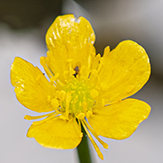





































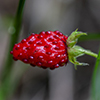
















































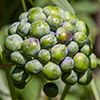
































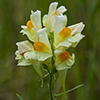












































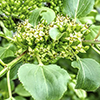



















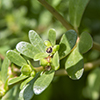






































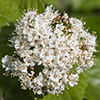













































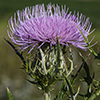


_02t.jpg)












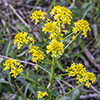























_04t.jpg)
























_02t.jpg)
















































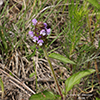
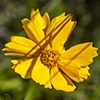











































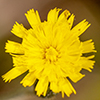










_02t.jpg)




_01t.jpg)
_01t.jpg)


















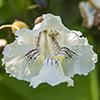



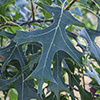


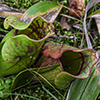


























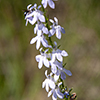



















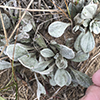




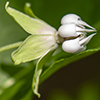













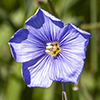

_04t.jpg)















































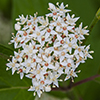















_09t.jpg)
_05t.jpg)
_01t.jpg)




















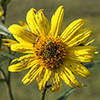
_01t.jpg)
_05t.jpg)






























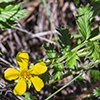




















































































































_01t.jpg)


_02t.jpg)
_04t.jpg)















































